|
|
|
Most people who know me know that I am a professional organizer. When they learn that I have also been writing a book, in company with my husband, on America's war in Afghanistan, I can see them wrestling with the disconnect this statement engenders. I confess that at times I have wrestled with this seeming disconnect myself. How did I become an author on such a topic? For starters, I am married to a military historian who has published eight books (not counting this one), all of which I have edited. In recent years, I have also assisted him in his research, and I was a contributor on his last two books. It has been an evolutionary process, to say the least, but I won't go into that now. Instead, I wish to capture some of the lessons I have learned about life and organization through the process of writing about war and chaos. Some of these lessons are specific to the topic of our book, while others are more general to the writing process. Lesson #1: Work with a BuddyMy husband and I have very different methods of writing. I edit as I go, laboring over every sentence until I'm satisfied with it. I go back to the beginning repeatedly and reread the whole thing (or portions thereof) to see if I like the way it flows. As a result, my process is slow, but my product is pretty nearly complete by the time I get to the end. In contrast, my husband's method might best be described as a sort of brain dump; he refers to the process as "vomiting on the page". He expels his ideas in a sort of stream of consciousness and then goes back later to "clean it up." He writes chapters at a much faster pace than I do, but they require more editing before they are publication ready. You might think that our two disparate approaches to writing would be incongruous, but the opposite has proven to be true. In fact, we seem to balance each other out, so much so that as I performed the final edit of our work, I found myself wondering repeatedly, "Did I write that, or did he?" This had to do, at least in part, with the fact that we edited each other's work. Thus, the final product was a true melding of our styles and voices. In part, however, it had to do with the unique contributions we both provided. Because he was much more comfortable with and knowledgeable about the topic, I could ask for his input when I was stuck, and his insights would get me on track and moving forward. On the other hand, because I felt the need to research things in depth, I was sometimes able to provide information that was new to him. THE LIFE/ORGANIZATION CONNECTION: When it comes to organizing and life, working with a partner can help you to achieve things you might struggle to complete on your own. A reliable, truthful, supportive friend can be a cheerleader, a source of emotional support, a pillar of strength, and a provider of wisdom. A buddy can help you to see your stuff, your space, and even your situation in new and meaningful ways. You can gain new insights about how to arrange things, how to part with things, and how best to proceed with whatever challenge you're facing. In addition, a partner can help you to stay on task. In the end, your final product will often be better than you imagined because of the encouragement and guidance of a trusted friend. Lesson #2: Perfect is the Enemy of the GoodBecause my method of writing is laborious and methodical, I can sometimes get bogged down by the process. In my effort to produce the perfect paragraph, I can waste precious time and experience unnecessary stress. My husband, with his different approach to the process, helped me to see that my work didn't have to be perfect to be good. Knowing that we were going to go back over the product multiple times with more than one set of eyes meant that I could set things aside that I was struggling with and move on. Invariably, things that had stumped me earlier would come together with relative ease after a brief respite. THE LIFE/ORGANIZATION CONNECTION: Sometimes we talk ourselves out of doing something because we know we won't be able to do it perfectly. On the flip side, we can sometimes get bogged down in a process of seeking perfection that actually prevents us from making progress. Few things in life are perfect (aside from newborn babies). Most of the time good is.... good enough. It's better to move forward and improve in small but meaningful ways than to become mentally, emotionally, and physically mired in misgivings and self-doubt. Lesson #3: Trust YourselfWhen we first started on our book, I often found myself wondering what on earth I was thinking when I agreed to take on the project. What did I know about Afghanistan or the war? While my husband assured me that I knew a whole lot more than the average person, I still wondered if it was enough. The more I read, and researched, and wrote, the more my confidence in the topic and myself as a researcher, interviewer, and writer grew. I began to trust that I could do what I had set out to do. I came to see that I am a person who can do hard things, and that hard things are really the best kinds of things to do because in doing them we become better versions of ourselves. THE LIFE/ORGANIZATION CONNECTION: If you are someone who feels overwhelmed by the organization process, you're not alone. It can be extremely challenging. Just wrapping your head around what needs to be done and knowing where to start is mind boggling for many. That said, it's the good kind of hard. Getting organized can change your life. It can make you a better version of yourself by improving the way you do things, how you look at the world, and how you interact with your environment. I truly believe that organization has the power to transform people's lives by reducing stress, increasing productivity, improving peace of mind and nurturing a sense of empowerment. If life is hard, one thing that can make it a little (or a lot) easier is getting organized. Lesson #4: Don't Give in to DiscouragementI admit that over the two plus years that we worked on the Afghanistan book my enthusiasm for the process and the product waxed and waned. At times I wanted to give up and walk away. My husband is a busy guy; he's almost always juggling multiple projects. There were times when I thought he would never have the time needed to help me get the book finished, and I didn't see how I could possibly do it alone. We figured it out. He made the time. We worked together and made it happen, and if I'm being honest, I have to admit that I am pretty proud of what we accomplished. THE LIFE/ORGANIZATION CONNECTION: Think of the word discouragement. The prefix 'dis' gives the root word the opposite meaning - so, for instance, trust becomes distrust, or not trusted. The suffix 'ment' comes from the Latin word mente which means mind or thought. So, discouragement is an absence of courage of thought. Synonyms for courage include determination, endurance, and fortitude. It's more than just bravery; it's sticking with things that are hard and seeing them through. As we've already established, getting organized can be difficult, challenging, and even overwhelming. It requires courage in the form of stick-to-itiveness, a willingness and conviction to persevere through the rough patches. Just as with our book, sticking with the organization process is well worth the effort, and you will feel wonderfully accomplished and proud when your goal is met. Lesson #5: Growth is Part of the ProcessIn the beginning, every chapter was painstaking. I lacked confidence, and I didn't trust myself. As a result, I worried and worked extra hard to understand the subject matter until I could explain it in layman's terms. In time, something inspiring occurred. The more I researched and interviewed and wrote, the more comfortable I became with my ability to do those things. My belief in myself improved. I became not only comfortable with, but proficient in my subject matter. It got easier. It wasn't until I found myself easily conversing with my husband about the challenges associated with using B52's for close air support or quickly creating a call-out box on the difference between the Taliban and al-Qaeda without having to look it up that I realized I had grown into and embraced my new role. It was a good feeling. THE LIFE/ORGANIZATION CONNECTION: I have seen a similar transformation in some of my clients. At first the organization process is daunting, and they are trepidatious about undertaking it. The more they work at organizing, the more comfortable they become with it. With enough effort and consistency, some actually change the way they think and act such that they truly become organized people. The more you do a thing - anything, really - the easier it becomes. Lesson #6: Look for Sources of InspirationMy confidence and comfort level took a turn in the right direction when I met a wonderful woman, an American soldier, who not only provided me with an interview that became the basis for one of our chapters, but also introduced me to two other women, both Afghans, who helped me understand Afghanistan and the war in new and eye-opening ways. All three of them continue to be a source of inspiration to me. They see needs, and they strive to fill them. They are making a real difference in the lives of people in truly desperate circumstances. Their stories gave meaning and purpose to my writing. THE LIFE/ORGANIZATION CONNECTION: Inspiration motivates and excites us to do and be better. It can come in many forms - a Pinterest image, a song, a blog post, a story, a person, etc. Look for ideas, resources, and people who make you want to improve and believe that you can. Anything that weighs you down or makes you feel inferior should be avoided. Look for the uplifting and let it embolden and excite you to do the things you've been afraid to do for one reason or another. Lesson #7: Look for the Silver LiningLike so many aspects of life and areas of the economy, the publication industry has been impacted by COVID-19. Our publishers, at least, are way behind on their review process. As a result, our deadline got moved back. In some ways this was a bummer because we were both eager to get done with the book and move on to other things. In the end, though, having extra time proved to be a good thing. It allowed us to tell a more complete tale of the war and its impact. By the time we sent our manuscript off, the United States had withdrawn from Afghanistan, and we were able to capture that process and its impact in our book. Had we met our original deadline, that would not have been the case. THE LIFE/ORGANIZATION CONNECTION: Life is full of challenges and setbacks. Often my organization clients are struggling to regain order in their lives after experiencing some sort of major life change or other challenging circumstance. Otherwise orderly people can become disorganized in the midst of life's chaos. Know that unexpected changes, no matter how unwelcome they may be, bring new opportunities in the wake of the trials. There is always something to be learned and gained from every experience. Often times of change are opportunities to rethink one's situation and make a fresh start. Lesson #8: Step Outside Your Comfort ZoneTo say that the topic of the Afghanistan war was outside my comfort zone is an understatement, but it has become a topic that I am not only comfortable with but somewhat passionate about. We often talk about "thinking outside the box". My husband, who also teaches about the concepts of narrative and cross-cultural relations, promotes the idea of expanding one's box to include new ideas and ways of thinking about and doing things. Our book taught me that doing so is not as difficult as you might think. It requires effort, to be certain, but as noted already, it gets easier over time as you expand your mind and develop your skills. THE LIFE/ORGANIZATION CONNECTION: Often a lack of organization can be attributed to habits and behaviors. Changing our behaviors and developing new habits (or systems) can make a huge difference in the level of organization we enjoy, but it all begins with a willingness and desire to step outside our comfort zones and try a new way of thinking about and doing things. Lesson #9: Everyone Thinks They Are on the Right SideAs Americans, we think of the Taliban and al-Qaeda as the 'bad guys', and we think of ourselves and our allies as the 'good guys'. The Taliban and al-Qaeda see things the other way around. They believe their cause is just. They see America and the West as decadent and depraved to the point that they have a duty to rid their world of our influence. Everyone thinks they are on the right side doing the right thing for the right reasons. I truly believe that there are very few people in this world intentionally pursuing evil for the sake of evil. People generally do what they do because they believe it's the right thing to do, and they want to be right. THE LIFE/ORGANIZATION CONNECTION: Living with other people, no matter how much we love them, is challenging. Often, those we love have a different approach (or lack thereof) to organization and clutter. Their clutter tolerance may be higher or lower than our own. Such circumstances can create tension and conflict within the home. Achieving compromise can be difficult, but it starts with recognizing that other people aren't doing what they do simply to rile and annoy us. They're doing what comes naturally to them. The first step to achieving consensus is learning to understand one another's perspective. Lesson #10: Things Are Often Not as They SeemIn our research we looked at a ton of primary source documents. One thing that quickly became apparent was that every source has a bias. Everyone, be they politicians or reporters or military commanders or common, everyday people, is trying to tell their story, and every story is impacted by the perspective from which it is told. Most people, whether consciously or unconsciously, don't tell the whole story; they tell the story they want you to hear. Their intent may be entirely innocuous. Nevertheless, what they are really sharing is a message, and the story is the means of conveying that message. THE LIFE/ORGANIZAION CONNECTION: We all have messes and fall short and make mistakes and struggle. No one's life is perfect. No one's kids are perfect. No one's house is perfectly organized - not even a professional organizer's home! When we view other people's lives through the lens of social media, it's easy to feel inadequate in comparison to the happy smiles, extravagant vacations, joyous occasions, clever projects, and glorious accomplishments that most people share on these platforms, Don't let other people's carefully curated experiences fool you into thinking that you are less capable or successful than them. We're all just doing the best that we can, including you. Give yourself some grace. Final ThoughtsThe Afghanistan book often felt like a burden to me while it was a work in progress, but once it was complete, I felt great fondness for the project. I'm grateful to have had the opportunity and experience. I'm proud of our hard work and the product we produced. I'm excited to see our book in print. What's more, I like how it has changed me for the better. It has helped me to grow and to develop my skills and abilities.
Isn't that the way it is with challenges? They seem really difficult when you are experiencing them, but once you've overcome them, they don't seem like such a big deal. In fact, they often feel like a blessing. I think that's because they are. Life is about growing, and changing, and improving, and the surest way to do those things is to push yourself to do things that feel a little (or a lot) beyond your current abilities - whether that means writing a book or tackling the mountain of mementos in the attic. In the end, I think you'll find that you are glad you made the effort.
28 Comments
We've all heard the axiom "A place for everything, and everything in its place." I have often seen this statement attributed to Benjamin Franklin, but in researching the phrase, it seems that there is some question as to its actual origins which might date back as far as 1640. Whoever said it first, one thing is clear: this is a truth that has been understood for centuries, and with good reason. The proverb actually emphasizes two principles of organization. The first is that everything should have a designated place where it is stored. The second is that things should be returned to their rightful place when not in use. These truths seem obvious enough, but the fact is that both aspects of this maxim can, and do, present challenges for some (if not most) people. Does Everything Really Need a Place?Yes. The answer to this question is yes. Which probably leads you to ask another, more direct question: why? The simple answer to the second query is clutter. Anything that doesn't have a home is clutter, and clutter is the enemy of us all. Clutter causes confusion, frustration, anxiety, stress, and irritability. It zaps our time, energy, creativity, productivity, and even our money (ever had to buy something you knew you owned but couldn't find?). In contrast, a home where everything has its place, and everything resides in its proper place is peaceful, relaxing, inviting, and inspiring. When you walk into such a space, you want to sit down and stay awhile - after admiring all the lovely order. When things have a designated space, they aren't just easier to find, they're easier to appreciate. Cluttered shelves, countertops, and surfaces swallow up everything that resides on them. It's as if they fall into a visual hole. Their identity is lost in the jumble. AFFILIATE DISCLOSURE: This post contains affiliate links. This just means that there are product suggestions included within the text. Should you click on one of the links and decide to make a purchase, I will receive a small commission. I only suggest products I love and have experience with that are directly related to the content in this post. You can view my Disclosure Statement for more information. Thank you for your support! Finding Everything a PlaceThe first step to finding a place for everything in your home begins with determining which things deserve a place in your home. That means decluttering, or purging your belongings. Once you've paired down your belongings to those things that serve a purpose and/or speak to your heart, it's time to determine where they should reside. Try implementing these suggestions for finding a home for all the things within your home. Consider Logical Locations I'm a big fan of creating a whole house storage plan. This involves thinking through the storage spaces in your home and determining what should go where. During our recent move (and numerous previous moves), I applied this concept to every space in our home, not just the storage spaces. For instance, I mapped out my kitchen and decided (before unpacking) what items should go where based on ease of use. To determine the best location for things, there are some basic guidelines you can apply.
Consider Space Limitations Almost everyone wishes they had more storage space. In many cases, you can increase your space's storage capacity by adding a shelf here or a storage solution there. For example:
The laundry room in our new home was spacious but it bothered me that there was a large swath of wall above the sink and washing machine that was completely unused. I asked our contractor (who was completing other work in the house) if he could build me some shelves to match the existing wall cabinet, and I'm so glad that I did! The addition of the shelves significantly increased the room's storage capacity, and I think it looks much more attractive as well.
Consider Storage Options When finding a place for things, the method of storage can be as important as the location. Different types of items require different types of containers. What's suitable for certain things, won't work well for others. Consider the following as you plan out where to place things:
Of course not all things are intended to be tucked away in a storage bin out of sight. Some things are meant to be viewed and enjoyed. Too much can be said about how to store and display specific types of items to go into the topic in depth here. Suffice it to say that those things you love to look at should inhabit a place of honor in your home. Display them where you can see them and in a way that does them justice. What to Do When You Don't Know
|
Everything In Its Place | |
The second part of our famous adage is "everything in its place". In other words, it is only helpful to have a place for everything if things are placed where they belong when not in use. This is a different skill set and involves forming certain habits such as:
To some these behaviors may seem tedious and time-consuming. In reality, each of these tasks take mere moments to perform when done as they arise, and the result is well worth the effort. Think how wonderful it feels to walk into a tidy, organized space at the end of a long day versus walking into an unkempt, disorderly space. The former is relaxing, while the latter increases stress and tension.
- hanging up coats and placing shoes and bags where they belong when entering the home
- putting dirty clothes in the hamper upon removing them and putting clean clothes in the closet or dresser once washed
- putting dirty dishes in the dishwasher (or washing them as soon as they are used)
- making the bed
- putting toys, games, books, movies, projects, supplies, and tools away after each use
- resetting a room upon leaving the space - i.e. putting everything back where it belongs
To some these behaviors may seem tedious and time-consuming. In reality, each of these tasks take mere moments to perform when done as they arise, and the result is well worth the effort. Think how wonderful it feels to walk into a tidy, organized space at the end of a long day versus walking into an unkempt, disorderly space. The former is relaxing, while the latter increases stress and tension.
Apply the Ancient Wisdom | |
When a concept continues to be emphasized centuries after it was introduced, it's a safe bet that concept is worth considering. The notion that everything should have a place and reside in its place when not in use is an old one but a profound one. Applying this ancient wisdom will not only bring order to your space but also peace to your mind and heart.
Have you ever set a timer for one minute and then waited? A minute is a long time when you are just sitting and watching the seconds tick by. Or maybe, like me, you sometimes race the microwave timer to see how much you can get done before whatever's in the microwave is finished. If you've done this, then you know you can accomplish a surprising amount in just a minute or two. With that in mind, think how much you could achieve in ten minutes!
A common reason for procrastinating organization tasks is the notion that "I don't have time". In reality, there are many simple organizing tasks that can be completed in 10 minutes or less. What's more, many of these tasks, if done regularly, can make life easier by helping us to stay ahead of the game and maintain a basic level of organization.
The next time you have a few unclaimed minutes, try accomplishing one of these 10-minute organizing tasks. Some need to be done at home, but several of them can be achieved while waiting for a doctor's appointment, or for soccer practice to end, or anywhere you may find yourself waiting.
A common reason for procrastinating organization tasks is the notion that "I don't have time". In reality, there are many simple organizing tasks that can be completed in 10 minutes or less. What's more, many of these tasks, if done regularly, can make life easier by helping us to stay ahead of the game and maintain a basic level of organization.
The next time you have a few unclaimed minutes, try accomplishing one of these 10-minute organizing tasks. Some need to be done at home, but several of them can be achieved while waiting for a doctor's appointment, or for soccer practice to end, or anywhere you may find yourself waiting.
Plan a Menu | |
Meal Planning for the week only takes a few minutes, and it is time well spent. Not only is it a great way to save time and money, it is also an excellent way to ensure your family eats healthier.
Do Some Scheduling | |
Ten-minutes is generally plenty of time to do any of the following:
- Enter birthdays and other upcoming events into your calendar
- Set reminders in your phone
- Update your to do list
- Schedule an appointment
Sort Through Mail & Other Papers | |
If done every day or two, it only takes a few minutes to sort through the mail, recylce or shred the unwanted items, file what needs to be filed, and set aside or act on those things that require attention. The same can be true for other piles of paper that may have begun to accumulate around the house.
Clean Out Your Bag | |
If you're talking on the phone or waiting for a pot to boil, take a few minutes to clean out your purse, work bag, or child's backpack. It's quick and easy, and it feels like an accomplishment. As a bonus, doing this task regularly can prevent forgetting or missing something important.
Clear Off Your Desktop | |
Stuff piles up quickly on desktops. The presence of clutter, especially on a work surface, can impact a person's productivity, creativity, and ability to focus. Clearing away the clutter will leave you feeling refreshed and make it easier to concentrate.
Clear Off Your Counters | |
Countertops are clutter magnets, so taking a few minutes every couple of days to clear away whatever has collected is a good way to keep things from getting out of control. Clutter-free countertops set a tone for the space. Maintain a feeling of order by keeping your counters free and clear.
Reset a Room | |
Even fairly messy rooms can be tidied or reset in a matter of minutes, provided everything has a place. A tidy space speaks to our subconscious in much the same way as a cluttered space. The difference is, instead of leaving us feeling frustrated, overwhelmed, and unsuccessful, a tidy space engenders feelings of control, accomplishment, and calm.
Clear Out Your E-mail | |
Got ten minutes? Why not clear the junk mail from your inbox? While you're at it, unsubscribe to newsletters and emails that no longer interest you, delete unneccessary or outdated emails, and organize the rest.
Clean Up Your Phone Contacts | |
This is something I rarely think to do, but it only takes a few minutes. Use the time to merge duplicates (am I the only one who has these?) and delete contacts you no longer need. While you're at it, why not clean out your voicemail inbox as well?
Edit Your Internet Favorites | |
If you're like me, you save websites and then forget about them. Before long, your favorites folder can become a cluttered mess of disorganized information. Take a few minutes to delete bookmarks for sites that no longer interest you and organize the rest.
Clean Out Your Car | |
Here's another simple task that has the power to lift your spirits. Go through the glove compartment, the center console, and any other cubbies where you may have things stashed. Toss out any trash, and if time allows, give the whole interior a good wipe down. If you're really feeling ambitious, vacuum it all out. Of course, that will take a little longer, but not much if you're using an industrial strength vacuum.
My husband surprised me awhile back by picking me up from the airport in a newly cleaned out car. I noticed it immediately and every time I got in the car for the next couple of months until winter arrived with its dirty melted snow and salt encrusted roads and ruined everything...
My husband surprised me awhile back by picking me up from the airport in a newly cleaned out car. I noticed it immediately and every time I got in the car for the next couple of months until winter arrived with its dirty melted snow and salt encrusted roads and ruined everything...
Clear Out Your Refrigerator | |
This is yet another task that can leave you feeling a little better about life. In mere minutes you can empty out sketchy leftovers, remove expired items, wipe down shelves, and arrange the remaining contents of your refrigerator in an orderly fashion. Once you've done so, opening the door will give you a little sense of accomplishment as you are confronted with the neatly arrayed shelves.
Clean Out Your Pantry | |
The next time you're waiting on hold, take a few minutes to sift through your pantry or food cupboard in search of expired food. While you're at it, combine open containers of the same product. Wherever it makes sense, remove unnecessary packaging to save space.
Declutter a Drawer | |
The junk drawer is always a good place to start if you want to complete a quick household organizing task. Other prime candidates are desk drawers and night stand drawers, but any drawer will do. Who knows, you might even have time for two!
Organize the Coat Closet | |
Spruce up your entry by organizing your coat closet, hall tree, or other entry storage space. Because these spaces are the first ones we come across as we enter our homes, it's easy for them to become dumping grounds for whatever we're carrying with us. A few minutes once every couple of weeks will go a long way toward keeping this area clutter free, which is a desirable thing since it's also the first thing visitors see when they come to call.
Do a Brain Dump | |
Write down all the little tasks and ideas that are floating around in your head, and organize your notes. You can also brainstorm a topic such as vacation ideas or blog post ideas or anything else that interests you. If something is troubling you, write out your concerns. If you have a decision to make, create a list of pros and cons. Writing things down is a great way to relieve both mental and emotional stress.
If you're eager to introduce a little more organization into your life, try starting with some 10-minute organizing tasks. They offer a quick and effective way to make meaningful progress toward the ultimate goal of becoming a more organized person. Many of them are easy to do while you're doing something else, like waiting for an appointment, waiting on hold or even talking on the phone. What's more, they leave you with an uplifting sense of accomplishment. What can you do in 10 minutes?
It's official. My husband and I are empty nesters. Our youngest son not only moved out, he moved to Montana (we live in Kansas)! While I wish he was a little closer to home, I'm happy to see him spreading his wings, and the good news is, he's off to a great start!
Our oldest child is thirty, so this empty nester thing has been a long time coming. As a result, I'm finding the adjustment relatively easy (not that I don't miss him). His absence has been made more bearable by the fact that three of our four grandchildren have recently moved close to us. One benefit of this trade-off is the fact that most nights the littles go home. On special occasions when they sleep over at our house, they already have a room all their own. That means we now have a room that is 100% dedicated to guests.
Overnight guests (other than the littles) are not infrequent at our house, so I am pleased with this new development. This past week I transformed our son's room to a guest bedroom, and I thought I would share with you the things I did to make the space as comfortable as possible for the many visitors I hope to accomodate.
Our oldest child is thirty, so this empty nester thing has been a long time coming. As a result, I'm finding the adjustment relatively easy (not that I don't miss him). His absence has been made more bearable by the fact that three of our four grandchildren have recently moved close to us. One benefit of this trade-off is the fact that most nights the littles go home. On special occasions when they sleep over at our house, they already have a room all their own. That means we now have a room that is 100% dedicated to guests.
Overnight guests (other than the littles) are not infrequent at our house, so I am pleased with this new development. This past week I transformed our son's room to a guest bedroom, and I thought I would share with you the things I did to make the space as comfortable as possible for the many visitors I hope to accomodate.
AFFILIATE DISCLOSURE: This post contains affiliate links. This just means that there are product suggestions included within the text. Should you click on one of the links and decide to make a purchase, I will receive a small commission. I only suggest products I love and have experience with that are directly related to the content in this post. You can view my Disclosure Statement for more information. Thank you for your support!
A Comfortable Place to Sleep | |
Mattress
First and foremost, I want my guests to sleep comfortably. It just so happens that we were in the market for a new mattress for that room because the old one was, well...old. Let's just say that in terms of years that mattress has been in our possession, the first digit was a two, and leave it at that.
Shopping for a mattress can be intimidating. It's an expensive investment, so you want to get it right. If you're shopping for a mattress that is going to be used by a variety of people, that complicates things even more. I found this guide from Sleep Foundation to be helpful. In covers all the factors from mattress types to pricing to body types to firmness and sleep positions. I guess you could say they really lay it all out (pun intended).
Sheets
In addition to a comfy and clean mattress, sheets play an important role in making guests feel welcome. How often have you visited family and slept on mismatched 30-year old sheets? I did last week. It wasn't awful, but I was sure glad to get home to my own bed. This comfortable sheet set is both affordable and luxurious. We have them on all our beds, and we love them! Cotton sheets (preferably Egyptian) are recommended because they are the most breathable.
Pillows
Pillows also play an important role in sleep comfort. The problem is, pillow preferences vary widely, so choosing pillows that will feel comfortable to a majority of people can be tricky. I recommend these shredded memory foam pillows amzn.to/3Ii1LUgwith bamboo covers because they are both soft and firm. They are also hyperallergenic and have moisture wicking/cooling properties. Another great option are these down alternative pillows.
First and foremost, I want my guests to sleep comfortably. It just so happens that we were in the market for a new mattress for that room because the old one was, well...old. Let's just say that in terms of years that mattress has been in our possession, the first digit was a two, and leave it at that.
Shopping for a mattress can be intimidating. It's an expensive investment, so you want to get it right. If you're shopping for a mattress that is going to be used by a variety of people, that complicates things even more. I found this guide from Sleep Foundation to be helpful. In covers all the factors from mattress types to pricing to body types to firmness and sleep positions. I guess you could say they really lay it all out (pun intended).
Sheets
In addition to a comfy and clean mattress, sheets play an important role in making guests feel welcome. How often have you visited family and slept on mismatched 30-year old sheets? I did last week. It wasn't awful, but I was sure glad to get home to my own bed. This comfortable sheet set is both affordable and luxurious. We have them on all our beds, and we love them! Cotton sheets (preferably Egyptian) are recommended because they are the most breathable.
Pillows
Pillows also play an important role in sleep comfort. The problem is, pillow preferences vary widely, so choosing pillows that will feel comfortable to a majority of people can be tricky. I recommend these shredded memory foam pillows amzn.to/3Ii1LUgwith bamboo covers because they are both soft and firm. They are also hyperallergenic and have moisture wicking/cooling properties. Another great option are these down alternative pillows.
|
|
Thoughts on Throw Pillows |
|
I love the look of a bed piled high with pretty throw pillows, but when it comes to guest rooms, it's important to consider where the pillows go when they are not on the bed. You don't want your visitors tripping over loose throw pillows in the middle of the night. If you also love decorative pillows, I recommend getting a large basket, such as the one shown here, for storing the pillows when not in use. If your guests aren't as into throw pillows as you are, they can place the pillows in the basket on their first night and leave them there throughout their stay. They will look tidy and be out of the way.
Blankets and Comforters
There are several factors to keep in mind when selecting blankets and comforters. These include quality, price, style, comfort, warmth, and breathability. When selecting bedding for a guest room, it's good to choose fabrics that are versatile and durable since they are going to be used by people with varying preferences and be washed repeatedly. Vellux is my personal favorite, but fleece is also a good option.
In addition to mattress size (full, queen, king), keep mattress thickness in mind when purchasing blankets and comforters. These days mattresses can be as much as 18 inches thick. If you have a super thick mattress, you may want to go with a slightly larger blanket to ensure that it completely covers the mattress. Blankets that don't tuck in tend to wander.
I recommend having at least one extra blanket in the room in case your guests get cold during the night. It's also nice to have an extra pillow or two in the closet.
There are several factors to keep in mind when selecting blankets and comforters. These include quality, price, style, comfort, warmth, and breathability. When selecting bedding for a guest room, it's good to choose fabrics that are versatile and durable since they are going to be used by people with varying preferences and be washed repeatedly. Vellux is my personal favorite, but fleece is also a good option.
In addition to mattress size (full, queen, king), keep mattress thickness in mind when purchasing blankets and comforters. These days mattresses can be as much as 18 inches thick. If you have a super thick mattress, you may want to go with a slightly larger blanket to ensure that it completely covers the mattress. Blankets that don't tuck in tend to wander.
I recommend having at least one extra blanket in the room in case your guests get cold during the night. It's also nice to have an extra pillow or two in the closet.
|
|
Making the Bed |
|
Making a bed may seem simple on the surface, but a surprising number of people do not know how to do it properly. This simple set of instructions from Better Homes & Gardens breaks it down nicely. Of course, there are variations in methods and preferences, but this gets at the basics.
We have recently stayed in a number of hotels, and there is one thing they do that drives me crazy. They always leave 12-18 inches of space between the top of the comforter/top sheet and the headboard. My husband and I both like to have the covers right up under our chins when we sleep. This practice makes that impossible without untucking the sheet from the foot of the bed.
When I make a bed, I pull the covers up to within about three inches of the head of the mattress. This accomodates the chin tuckers like myself, without significantly inconveniencing those who like to sleep with their shoulders and arms exposed as they can simply fold the top of the comforter and top sheet over. What do you think? Are you a chin tucker or an arm exposer? Where do you place the top of your comforter and top sheet when you are making a bed?
We have recently stayed in a number of hotels, and there is one thing they do that drives me crazy. They always leave 12-18 inches of space between the top of the comforter/top sheet and the headboard. My husband and I both like to have the covers right up under our chins when we sleep. This practice makes that impossible without untucking the sheet from the foot of the bed.
When I make a bed, I pull the covers up to within about three inches of the head of the mattress. This accomodates the chin tuckers like myself, without significantly inconveniencing those who like to sleep with their shoulders and arms exposed as they can simply fold the top of the comforter and top sheet over. What do you think? Are you a chin tucker or an arm exposer? Where do you place the top of your comforter and top sheet when you are making a bed?
Space to "Hang Their Hat" | |
If your guest room is just a guest room and serves no other purpose, then leaving space for your visitors to unpack or hang up clothing is probably not a big deal assuming the room has a closet. If possible, a dresser is also helpful, not only as a potential place for guests to stash their things, but also as a surface on which to set things.
If, however, your guest room has to do double duty as say, a craft room or office, then you should make every effort to carve out guest-only space. This might be a couple of empty dresser drawers or an open section in the closet with 10-12 empty hangers. Ideally you would have both. If neither is an option, then I recommend a collapsible luggage rack like the one shown here where guests can place their suitcase at a comfortable height.
If, however, your guest room has to do double duty as say, a craft room or office, then you should make every effort to carve out guest-only space. This might be a couple of empty dresser drawers or an open section in the closet with 10-12 empty hangers. Ideally you would have both. If neither is an option, then I recommend a collapsible luggage rack like the one shown here where guests can place their suitcase at a comfortable height.
Provide Basic Conveniences | |
When placing items in our guest room, I thought about the types of items you find in most hotel rooms and chose those that made the most sense for our space. I also added a few of my own. The basic ammenities I selected include:
I was careful not to add too many items into the space because I want guests to feel like the space is theirs to use. For this reason, I kept the decor and wall art simple as well and made sure there was plenty of surface space on top of the furniture for visitors to place their own belongings.
- a bedside lamp
- an alarm clock
- a box of tissues
- a small notepad and pen placed in the nightstand
- ear plugs (also placed in the nightstand)
- an extra phone charging cable (you guessed it - the nightstand)
I was careful not to add too many items into the space because I want guests to feel like the space is theirs to use. For this reason, I kept the decor and wall art simple as well and made sure there was plenty of surface space on top of the furniture for visitors to place their own belongings.
Help Guests Connect | |
The final touch was to create a small sign that reads:
Welcome to our home.
Should you need
to use the internet,
the wifi password is...
Should you need
to use the internet,
the wifi password is...
The sign is displayed on the dresser where is in plainly visible.
If the Space Allows | |
If you have room, it's nice to provide a writing/work surface such as a small desk. Be sure to include an appropriately sized desk chair as well. Another great addition is a comfortable reading chair and/or a bench for sitting, preferrably one with storage for extra blankets and pillows.
Our guest room faces south with a large window, making it the warmest room in the house, even in winter. For this reason, I have placed a small portable fan in the closet in case guests feel overheated during the night.
Our guest room faces south with a large window, making it the warmest room in the house, even in winter. For this reason, I have placed a small portable fan in the closet in case guests feel overheated during the night.
|
|
Bathroom Extras |
|
With our son gone, the bathroom next to the guest bedroom has no permanent user. I have therefore designated it "the guest bathroom". It's the bathroom visitors, whether popping in for a chat or staying overnight, will use. As such, I have stocked it with items a visitor might need while away from home. These include:
- a hair dryer
- an unopened tube of toothpaste
- a couple of extra toothbrushes still in the package
- nail clippers
- cotton swabs
- cotton balls
- a small supply of basic over-the-counter medications for pain, cold/flu, and indigestion
- bandages in varying sizes and anticeptic ointment
- feminine products
- plenty of extra toilet paper (stored in plain sight)
Whether you have an empty room to dedicate to guests or you're just carving out space in a room already dedicated to another purpose, I hope you've found these suggestions for creating a comfortable guest room useful.
As an organizer, I've been told many times and in a variety of ways, "I just don't have the organizing gene." It is true that organization comes naturally to some people, and for others it is more of a struggle. That said, organization is a skill, or set of skills, and as such, it can be learned...and taught.
If you are raising children, organization skills are some of the best skills you can instill in them. Teaching organization skills to children will benefit them in a variety of ways. Children with organization skills are able to:
If you are raising children, organization skills are some of the best skills you can instill in them. Teaching organization skills to children will benefit them in a variety of ways. Children with organization skills are able to:
- Work more effectively and complete tasks and assignments with greater ease
- Think creatively
- Work independently
- Grasp the basics of time management
- Plan ahead
- Approach tasks in an orderly fashion
- Experience less stress and frustration
- Perform better academically
Instill Good Habits
Teaching organization skills to children begins with instilling good habits. This can be accomplished in a variety of ways. The more approaches that are utilized, the more likely children are to understand, master, and adopt the skills you're trying to teach. Try implementing the following:
These are just a few examples of things you can do to help instill good habits in your children, and the best part is that all of these skills benefit you as well!
- Hold a weekly family meeting: Teach time management and planning by holding a weekly family meeting to go over the calendar and discuss any preparations that need to be made for upcoming activities.
- Teach your child to use a planner: Get your child a homework planner (many schools provide them). Help your child record upcoming tests, projects, papers, and assignments and plan out a schedule for completing things in stages to avoid cramming at the last minute.
- Utilize Systems: Set up systems for controlling clutter and maintaining order.
- Establish Priorities: Help children learn to prioritize by expecting them to complete needed or required tasks before playing or relaxing.
- Establish and Enforce Expectations: A variety of simple rules or expectations can be helpful for reinforcing basic principles of organization such as:
- If you get it out, put it away.
- If you take it off, hang it up (or put it away).
- If you make a mess, clean it up.
- Before you start a new activity, clean up the one you just finished.
- Establish Routines: Routines for morning, after school, and evening help children learn to manage their time and prioritize. They foster a sense of responsibility and accomplishment.
These are just a few examples of things you can do to help instill good habits in your children, and the best part is that all of these skills benefit you as well!
Set Them Up for Success
There are a number of things that parents and caregivers can do to help children learn organization skills with greater ease. Consider the following:
- Make stuff accessible - When setting up storage for children, keep their physical limitations in mind.
- Put things that children use regularly at kid height.
- Make sure containers are lightweight and easy to open.
- Eliminate obstacles - Check the environment for anything that might make accomplishing a desired task more difficult or complicated and find ways to alleviate any impediments.
- Where possible and logical, choose containers without lids. Lids represent and added step in the process of getting things out and putting things away. As such, they are a deterant (albeit minor).
- If you want your kids to learn to make their beds (and have it look semi-presentable), remove the top sheet, at least when they are young. Top sheets complicate the process considerably.
- Label Things - Labels are a great way to help children learn and remember where things belong.
- Keep lables simple and straight forward.
- Include the word and a picture for young children, thus helping them practice reading skills as well as organization skills.
- Create Checklists - Use checklists to break big tasks (like cleaning the bathroom) into smaller tasks (scour sink, scrub tub, clean toilet, etc.).
- Download free printable cleaning checklists here.
- Creat Charts - There is tremendous satisfaction in crossing things off a chart or list. Doing so fosters a sense of accomplishment. Download free customizable kids' work charts here. Other benefits of charts are thus:
- They allow children to visualize their progress
- They help children remember what they need to do
Provide Motivation
Motivation is both a catalyst and an inducement. It is also a self-sustaining phenomenon. Motivation prompts us to act. When we act, we experience success, and success fuels our motivation to continue to act. Motivation can be external (think catalyst/inducement) or internal (desire for success). As a parent or caregiver, there are numerous things you can do to provide motivation to encourage children to do the things that will instill good habits.
- Provide Incentives - Allow children to earn privileges or rewards. Incentives don't have to be flashy, elaborate or expensive. Indeed, they need not cost anything at all. Examples include:
- Sincere praise and aknowlegement - very important for self-esteem
- One-on-one time with a parent
- Staying up 15 minutes past bedtime
- Enjoying a fun family outing
- Make a Game of It - Learning new skills can be fun! Work can be fun! Helping children to understand these truths is a reward in itself. Look for ways to replace the potential drudgery and frustration of developing new habits with enjoyment. For ideas, check out this previous post.
Be an Example
Perhaps the most important thing you can do to instill good habits in children is to set an example of the behaviors you want them to adopt. In the case of developing organization skills, you can do this by creating and maintaining an organized space. It all starts with having a place for things, knowing where things are, and putting things away consistently. It's also important to practice what you preach, so to speak. Follow the advice you give and the guideline you establish. Let them see the benefits of adopting these behaviors by observing you.
Young children often find tremendous satisfaction and delight in creating works of art. Indeed, many children are prolific artists. Storing and displaying all their creations can present a bit of a challenge for parents.
For one thing (if we're being totally honest), not everything they draw, paint, or color is worthy of exibition. In addition, most of the art they produce is on cheap paper that tends to yellow, wrinkle, and curl over time. Then there is the children's own insistance that their work be kept and preserved which requires both display and storage space.
With a little planning it is possible to develop a system for curating children's artwork that will satisfy everyone's needs and desires.
For one thing (if we're being totally honest), not everything they draw, paint, or color is worthy of exibition. In addition, most of the art they produce is on cheap paper that tends to yellow, wrinkle, and curl over time. Then there is the children's own insistance that their work be kept and preserved which requires both display and storage space.
With a little planning it is possible to develop a system for curating children's artwork that will satisfy everyone's needs and desires.
AFFILIATE DISCLOSURE: This post contains affiliate links. This just means that there are product suggestions included within the text. Should you click on one of the links and decide to make a purchase, I will receive a small commission. I only suggest products I love and and have experience with that are directly related to the content in this post. You can view my Disclosure Statement for more information. Thank you for your support!
Designate a Display Space | |
I recommend designating a specific space in your home for displaying your child's artwork and then rotating pieces over time as new ones are created. This will help prevent pieces on display from degrading over time and keep the exhibit fresh and interesting.
In addition to that old favorite the refrigerator, possible candidates for display space include a hallway, kids' playroom, family room, stairway or entry. Personally, I like to choose a space that visitors are sure to see.
In addition to that old favorite the refrigerator, possible candidates for display space include a hallway, kids' playroom, family room, stairway or entry. Personally, I like to choose a space that visitors are sure to see.
Show It Off | |
A simple Google search will yield hundreds of examples of ways to display children's artwork. Here are a few of my personal favorites:
Frame It:
Consider framing special pieces for added impact and appeal. I love float frames for this purpose as they tend to really catch the eye and make whatever is framed in them stand out against the background. Since kids' artwork is often produced on oversized paper, I recommend 11" x 14" frames at a minimum. With a float frame, it's okay if the piece is smaller than the frame - better to have extra space than to have to trim a piece down to fit the frame.
If you don't want to spend the money on frames, you can create your own using a variety of mediums. For oversized or oddly shaped pieces, you can use scrap wood to create a custom frame like the one shown here that we made to show off our son's rather large drawing of a buffalo which is currently on display in our playroom.
Frame It:
Consider framing special pieces for added impact and appeal. I love float frames for this purpose as they tend to really catch the eye and make whatever is framed in them stand out against the background. Since kids' artwork is often produced on oversized paper, I recommend 11" x 14" frames at a minimum. With a float frame, it's okay if the piece is smaller than the frame - better to have extra space than to have to trim a piece down to fit the frame.
If you don't want to spend the money on frames, you can create your own using a variety of mediums. For oversized or oddly shaped pieces, you can use scrap wood to create a custom frame like the one shown here that we made to show off our son's rather large drawing of a buffalo which is currently on display in our playroom.
A whimsical and unique way to "frame" children's artwork is by creating outlines on a wall using strips of trim, paint, or Washi tape as shown below. A fun bonus of this approach is the ability to easily switch out works of art with little effort.
I love this vibrant display wall from artful-kids.com. The use of colored chalkboard paint allows you to create individualized designs around the edges of your frames, adding an even greater one-of-a-kind vibe to your gallery. Perhaps the thing I love most about it, though, is the imperfect nature of the blocks of color. There is no attempt here to create sharp, crisp edges. To me, this adds to the charm and playfulness of the display.
Speaking of chalkboard paint, here's another idea from artful-kids.com. In this case, the entire wall has been painted with black chalkboard paint, and individual frames drawn on with chalk. The nice thing about this is that you can switch out pieces by erasing the old frame and drawing in a new one specifically designed to fit and showcase the artwork it surrounds.
Washi tape comes in a seemingly endless array of colors and patterns, making it an extremely versatile medium, as demonstrated here by Jennae of greenyourdecor.com. It won't damage your walls, and it's easy to remove and redo, allowing you to change things up to accomodate new creations over time.
For those of us who aren't entirely confident in our ability to freehand things, a simple solution is to hang picture frames minus their glass inserts and backing. Paint them a lively color as demonstrated here by Heather from thecaterpillaryears.com. You can paint them all one unifying color as shown or choose an assortment of bright hues for a sort of rainbow effect. You could also select colors to coordinate with the room's decor.
Hang It:
The benefit of hanging artwork is that it is super easy to switch out pieces. The drawback is that the edges of the artwork have a tendancy to curl up over time. A great way to prevent curling edges is to slide the artwork into a clear plastic sleeve before hanging it. There are lots of fun ways to hang kids' artwork. Here are a few of my favorites:
The benefit of hanging artwork is that it is super easy to switch out pieces. The drawback is that the edges of the artwork have a tendancy to curl up over time. A great way to prevent curling edges is to slide the artwork into a clear plastic sleeve before hanging it. There are lots of fun ways to hang kids' artwork. Here are a few of my favorites:
Get yourself some colorful mini clothespins and some natural jute twine (which comes in a variety of colors), and string up a simple "clothesline" like this one by Haeley from designimprovised.com.
For a sturdier solution, hang magnetic strips mounted to boards. This example comes from Laura at Never Listless. Finish it off with some fun, colorful circle magnets and you're all set!
Keeping with the magnetic theme, why not try this idea by Melissa from Inspiration Organization. Frame a piece of sheet metal to create a versatile display board.
If sheet metal makes you nervous, you might try a similar concept using cork. This example from John and Sherry at Young House Love utilized cork tiles.
This modified version of a cork display board by Samantha at Simply Organized is great for displaying each child's latest and greatest individually.
|
|
Funny Story |
|
Our youngest son's fourth grade art teacher was obsessed with sculpture. Here in my home office, there are no less than five of his creations on display. He is 20 now, but I still love them (especially the elephant).
In a previous home, I had one of his creations on display in the living room. It was resting on a set of built-in shelving which also housed many of our treasures from the Middle East. At a dinner party we were hosting, the wife of my husband's boss was admiring the contents of the shelves. After singling out a handful of pieces, she pointed to our son's sculpture and asked, "Where did that come from?" When I told her my fourth grader made it, she said, "Really? I thought it was some sort of ancient relief sculpture!"
In a previous home, I had one of his creations on display in the living room. It was resting on a set of built-in shelving which also housed many of our treasures from the Middle East. At a dinner party we were hosting, the wife of my husband's boss was admiring the contents of the shelves. After singling out a handful of pieces, she pointed to our son's sculpture and asked, "Where did that come from?" When I told her my fourth grader made it, she said, "Really? I thought it was some sort of ancient relief sculpture!"
Long Term Preservation
File It:
When it's time to retire a piece of artwork, there are a variety of options for curating items long term. The simplest and most obvious is to create a filing system or binder for preserving extra special pieces. When the filing system starts to get crowded, sort through it and thin it out with the input of the artist.
When it's time to retire a piece of artwork, there are a variety of options for curating items long term. The simplest and most obvious is to create a filing system or binder for preserving extra special pieces. When the filing system starts to get crowded, sort through it and thin it out with the input of the artist.
Photograph It:
Awkwardly shaped or sized pieces or items that won't withstand the test of time (think macaroni sculpture), can be photographed or scanned as a means of preserving them. In addition to a photo of the item, be sure to take a photo of the artist with their artwork.
Awkwardly shaped or sized pieces or items that won't withstand the test of time (think macaroni sculpture), can be photographed or scanned as a means of preserving them. In addition to a photo of the item, be sure to take a photo of the artist with their artwork.
Photos and scans can be used to create an artwork portfolio. This can be achieved either by printing the photos and inserting them into an album or by creating a photo book online. Provide journaling (yours or the child's) that tells about the piece - when and why it was created, what it is, and how it was produced. For more on this topic, see my post When a Photo Is Sufficient.
Artkive It
Too busy to scan all your kids artwork? Don't have the necessary technology to preserve their artwork digitally? No worries. Artkive will send you a box. You fill it with 25 of your child's best works of art and mail it back to them. They will turn it into a custom gallery quality mosaic print complete with smooth white matting and white wooden frame (overall size is 26" x 26"). You also have the option to choose a photo book instead (or in addition).
Gift It:
Children's artwork makes a fun gift, either in its original form or repurposed from a photograph or scan. The following individuals would most likely be pleased to receive an artistic gift from your child:
Children's artwork makes a fun gift, either in its original form or repurposed from a photograph or scan. The following individuals would most likely be pleased to receive an artistic gift from your child:
- grandparents and other extended family
- teachers
- coaches
- doctors/medical providers
- neighbors, especially those who live alone
- friends
- soldiers
- first responders
- religious leaders
- nursing home residents
- patients who are hospitalized (to include other children)
Speaking of gifts, if your child likes to draw on newsprint, consider using one or more of their creations as gift wrap.
And speaking of sharing, scanned artwork can be saved to a file or disc and shared. Save it to an SD card and insert it in an electronic photo frame to enjoy an ever-changing display of your child's creativity.
Preserving kids' artwork in this format allows you to manipulate it in various ways. Use it to create calanders, magnets, coasters, mouse pads, notecards, mugs, t-shirts, decorative pillows, face masks, and more.
Preserving kids' artwork in this format allows you to manipulate it in various ways. Use it to create calanders, magnets, coasters, mouse pads, notecards, mugs, t-shirts, decorative pillows, face masks, and more.
Children can be sensitive about their creations, expecting parents to hold onto every scrap of paper they ever scribbled on. By taking on the role of curator, you demonstrate to your child that you appreciate their work and care about preserving it. You also help them to understand that there are different ways to preserve and enjoy their creations, that not all creations are created equal, and that learning to be discerning allows them to create a portfolio they can feel proud of.
AFFILIATE DISCLOSURE: This post contains affiliate links. This just means that there are product suggestions included within the text. Should you click on one of the links and decide to make a purchase, I will receive a small commission. I only suggest products I love and and have experience with that are directly related to the content in this post. Thank you for your support! View my Disclosure Statement for more information.
When problems arise, my organizer brain immediately takes in the situation and starts looking for ways to improve the physical environment in order to make it more functional. Such has been the case recently. I have just returned from two and a half weeks of assisting my mom who is recovering from a broken hip.
Long term illnesses or injuries, such as my mom's, can make it difficult for a person to function comfortably within his or her normal surroundings. The more that can be done to accommodate the recovering person's needs and abilities, the more comfortable that person will be physically, mentally, and emotionally. Often a few simple changes can make a big difference in a person's ability to comfortably do for themselves as much as possible.
In this post, I would like to share some suggestions for things you can do to make the physical environment more user-friendly for someone who is recovering from a serious illness or injury.
Long term illnesses or injuries, such as my mom's, can make it difficult for a person to function comfortably within his or her normal surroundings. The more that can be done to accommodate the recovering person's needs and abilities, the more comfortable that person will be physically, mentally, and emotionally. Often a few simple changes can make a big difference in a person's ability to comfortably do for themselves as much as possible.
In this post, I would like to share some suggestions for things you can do to make the physical environment more user-friendly for someone who is recovering from a serious illness or injury.
Remove Obstacles
One of the first things I did after arriving at my mom's house was to remove the throw rugs from her bathroom floor. They may serve a useful purpose, but in her current situation they are more of a hazard than a help. I washed them and set them aside to be replaced later when she is stronger and better able to get around.
A person suffering from a serious illness is often in a weakened state. This can also be true of someone who has been injured seriously. Anything you can do to help them get around more easily is desirable. This may mean moving furniture around temporarily to create a more direct path from point A to point B. Look around the environment with new eyes searching for anything that could be a tripping hazard, sharp corner, obstacle, or other potential danger and find a way to minimize the risk.
A person suffering from a serious illness is often in a weakened state. This can also be true of someone who has been injured seriously. Anything you can do to help them get around more easily is desirable. This may mean moving furniture around temporarily to create a more direct path from point A to point B. Look around the environment with new eyes searching for anything that could be a tripping hazard, sharp corner, obstacle, or other potential danger and find a way to minimize the risk.
Make Things Accessible
A person who is seriously injured or ill is likely to have limited mobility. They may be bed-ridden or just camped out on the sofa for a time. Their ability to reach things and do simple tasks is probably reduced. This can be tremendously trying. Finding ways to make things easier to access will help them retain a degree of independence and greatly reduce their level of frustration. Some of my favorite solutions include:
- Using clear plastic bins with handles to group items within a cupboard. My favorites are actually designed for organizing the refrigerator, but they work great just about anywhere. The handles make them easy to grip, and they slide nicely in and out of the cupboard making it painless to reach items deeper in the cabinet. They function like pull out shelves, only they are much less expensive and easier to "install". Instead of the shelf moving, the contents of the cupboard slide in and out inside the bin. As an added bonus, they come in a wide variety of sizes, so you're sure to find one that fits your needs.
- For the person who is bed-ridden or sofa bound, a tabletop organizer is a great way to keep all the essentials within arm's reach.
- A bedside storage organizer is another great way to keep regularly used items close at hand. One side slips under the mattress to hold the caddy in place, and the other side hangs down beside the bed. They come with multiple pockets for storing reading material, glasses, phone, remote control, and more.
Utilize Effective Tools | |
We are fortunate to live in a world where energy saving, work reducing devices abound. What's more, many of these gadgets are specifically designed for people with limited mobility, strength, energy, and/or dexterity. Here are some examples of tools designed to make doing basic household tasks easier.
- After using a long-handled dustpan with broom I will never go back. Why bend over and sweep, sweep, sweep when you can stand upright to accomplish the same task? This is a must for anyone who has difficulty stooping or bending, and I highly recommend it for even the most agile housekeepers.
- Hefting heavy laundry baskets or hampers can be hard on even the most hale among us. For someone with strength and mobility issues, it presents a real challenge. A wheeled laundry hamper with retractable handle is a great way to transport laundry without having to heft it. I personally prefer one with a retractable handle because wheeling it from one place to another does not require stooping or bending.
- Vacuuming is another task that can be impossible for someone struggling with illness or injury. A robot vacuum cleaner will do the work for you on the schedule you select. My daughter and son-in-law have a robo vacuum. They named it Dusty, and my granddaughter considers it a member of the family. It appears in all her drawings of her family.
- A reacher grabber tool can solve a myriad of challenges. I use mine to get socks out of the way back of my stack-able washing machine. Otherwise I have to get on my hands and knees and crawl half way in the washer! It's great for reaching items overhead or under foot and perfect for reducing back strain and other discomforts.
- When my husband broke his arm, the occupational therapist introduced us to this non-slip material. It's double-sided, easy to clean, and can be cut to any shape you need. Use it to keep items from sliding on a flat surface or for gripping things.
- I first discovered Eco Cloths while working at a specialty kitchen store, and I love them! These tightly woven micro-fiber cloths clean with just water. No chemical cleansers required. I recommend them for any household, but they are especially nice for people with limited mobility and dexterity because all you need is a damp cloth. No juggling a spray bottle while wielding a cloth. These cloths allow you to clean with one hand.
Often a person recovering from serious illness or injury spends a good deal of their time either in bed or lounging on a sofa. It can be frustrating to be confined to a small space, but there are a variety of products available to help make the experience more comfortable, and possibly even more productive. Here are a few of my favorites:
- We got my mom this tablet pillow last fall when she was recovering from pneumonia, and she loves it! She has gotten so much use out of it. It makes working or watching on a tablet easy and comfortable.
- Depending on the type of headboard you have, it can be almost impossible to sit up comfortably in bed. This bedrest back support pillow allows you to have comfortable back and arm support. What's more, it can be used in other locations as well to include on the floor.
- I recently purchased this breakfast tray for my mom, and it is working out wonderfully. In addition to eating off the tray, she uses it to write on, prop her tablet pillow on, pay bills and balance her checkbook on. You could also play solitaire or other card games on it to pass the time in bed. As a bonus, when not in use, the legs fold under to create a slim profile that can easily be stored within reach between a bed and night stand.
- This bed wedge pillow set relieves a variety of discomforts from acid reflux to back pain and more. It can even help reduce snoring. One section allows you to rest in a semi-recumbent position, and the other section can be used to elevate the legs.
- This lap desk offers another alternative to the breakfast tray and serves many of the same functions. What I like about this option is the cushy base which rests comfortably on your lap. I also like the slot on the top for propping up a cell phone.
- TV trays are great for serving food to a sofa bound person. They can also be nice for someone confined to their bed. Sometimes it's nice to sit up and swing your legs around and work or eat off of a hard surface for a change of position and perspective.
Bathroom safety is often a concern for someone who is recovering from illness or injury. In our family we have found the following items to be particularly helpful in providing needed support and comfort.
- This tension mounted security pole is great for helping a person with mobility issues get up and down safely and comfortably. I love the swivel feature that allows you to move the handle section out of the way when needed.
- My mom's most recent injury has really highlighted for me the value of handrails and grab bars, particularly in the bathroom. Install them near the toilet, shower, and tub to make transitions safe and smooth.
- A good sturdy shower chair makes bathing possible for a person with limited mobility or strength. Bathing is something few of us really want assistance with, so anything that allows a person to bathe independently without fear of injury is a blessing.
- I can't recommend removable shower heads enough whether or not you're recovering from an illness or injury. In addition to making bathing easier, they also make cleaning the shower or tub simpler. For a person who needs to shower while seated, they are an absolute must.
- We recently discovered this toilet seat riser with handles in conjunction with my mom's recovery. Like bathing, most people strongly prefer to get on and off the toilet by themselves. This allows a person with strength and mobility issues to maintain that coveted independence.
- A good non-slip bath mat is recommended for any household, but it is particularly important for people at risk for falls.
While working at the kitchen store, I discovered some really great kitchen gadgets designed to make accomplishing basic tasks simple and pain free for people with strength and dexterity challenges. Here are some of my favorites.
- My mom has used porcelain dishware for years, but these dishes are heavy, especially when lifted in a stack. My mom is 4'11" tall, and the dishes go in a cupboard above her head. A better, safer solution was clearly needed. This set of lightweight all-purpose dishware is perfect for her needs. In addition to being lightweight, they are eco-friendly, unbreakable, microwave and dishwasher safe. What more could you want from a set of dishware?
- A good jar opener is a must for anyone with grip issues. I like this one that mounts under the cabinet because it doesn't take up valuable space in a drawer. It also works on pretty much any size jar.
- My husband got this kitchen multi-tool set for my mother for Christmas last year, and I'm totally getting one for us after using hers. There isn't a package you can't open with one of these tools. As a person with arthritis, I appreciate the pain free options these tools provide.
- This easy pour spout makes it possible for weak hands to pour milk or juice from a jug without spilling.
- My kids got me an electric can opener a couple of years ago, and it seriously brings me joy! It never even occurred to me that I needed one, but I wouldn't want to live without it now that I have one. It's another amazing tool for opening stuff without pain, and it's fun to use!
- The Zyliss Easy Pull Food Chopper is hands-down my favorite kitchen tool. Just give the handle a few pulls and you're done! It's so easy, and it's fun. It makes a tedious, and potentially tiring task, quick and simple. We affectionately refer to ours as the "duck chopper" because of the noise it makes when you pull the string.
- Lastly, I recommend a set of kids' safety knives for anyone with shaky hands, difficulty gripping, or limited hand strength. My grand kids are able to cut, slice, and dice a vast range of foods using their knives, all without fear of injury. Why can't that be true for an adult as well? It may not be ideal, but it's way better than cutting yourself.
As you can see, organizing for injury or illness is not complicated, but it does take some thought. The key is to identify specific needs and work from there to find the best solution. Anything you can do to make a recovering person more comfortable and better able to enjoy some independence is highly desirable!
You've sorted through your stuff. You've identified the items that no longer support the life you want to lead. You've boxed or bagged up the things you're not keeping. Now what?
Decluttering can be a major undertaking. You should be commended for making it to this step in the process, but you aren't done yet. What you do with the things you have decluttered is as important as the decluttering process.
There are many options available for those wanting to part with no longer needed items. Choosing the right one for your stuff can make a real difference to someone else, either positively or negatively, so let's take a moment to discuss the possibilities.
It's always nice to end on a positive note, so I'll start by talking about what not to do with the stuff you wish to be rid of.
Decluttering can be a major undertaking. You should be commended for making it to this step in the process, but you aren't done yet. What you do with the things you have decluttered is as important as the decluttering process.
There are many options available for those wanting to part with no longer needed items. Choosing the right one for your stuff can make a real difference to someone else, either positively or negatively, so let's take a moment to discuss the possibilities.
It's always nice to end on a positive note, so I'll start by talking about what not to do with the stuff you wish to be rid of.
NEVER Gift Your Used Stuff to Anyone
Without Their Permission. Ever.
It's tempting to give items you no longer need to people you think can use them, but it's also lazy. It is not appropriate to pass your clutter onto others. This is not decluttering. It is avoidance behavior or guilt management. Often the reason people choose this option is to assuage the guilt they feel for getting rid of things - things they paid good money for but never used, things that were gifted to them, things that still have value. It's OK to get rid of something if you're helping a friend in the process, right? Yes...
...However, as often as not, the person or persons on the receiving end don't actually want what it is you're offering. By giving people things they have no use for, you're adding to their clutter. That is not a considerate thing to do. Instead of feeling guilty for parting with an item, you should feel guilty for forcing something on someone else that neither you or they want.
...However, as often as not, the person or persons on the receiving end don't actually want what it is you're offering. By giving people things they have no use for, you're adding to their clutter. That is not a considerate thing to do. Instead of feeling guilty for parting with an item, you should feel guilty for forcing something on someone else that neither you or they want.
|
|
Thanks, But No Thanks |
|
A year or so ago an acquaintance of mine came up to me at church and informed me that she had something for me. She had been decluttering her bookcase and thought of me when she came across some books on menopause. Really? This did not feel thoughtful to me. In fact, it felt a little offensive. I'm the first person that comes to mind when you think of menopause? Gee, thanks.
I should have told her that I didn't want her books, but it was easier for me to accept them and then drop them in the donation bin at the thrift store on the way home. That is a natural instinct for me, to take things I don't want (that others can use) to the thrift store, but a lot of people will accept the so-called gift reluctantly and then allow themselves to be unnecessarily burdened by the added clutter.
I should have told her that I didn't want her books, but it was easier for me to accept them and then drop them in the donation bin at the thrift store on the way home. That is a natural instinct for me, to take things I don't want (that others can use) to the thrift store, but a lot of people will accept the so-called gift reluctantly and then allow themselves to be unnecessarily burdened by the added clutter.
A Better Way | |
If you've got stuff you no longer want or need (and who doesn't?), it's OK to offer it to others. In fact, it's a great thing to do, so long as it's done right. Instead of just handing someone a box or bag of items they may not be able or interested in using, try one of these methods for sharing your unwanted stuff:
- Make Sure Your Stuff is Worth Sharing: First and foremost, look at your stuff with an objective eye. Is it even worth passing on? Is it outdated, worn out, or otherwise unappealing? Even if the honest answer is yes, that doesn't mean there's not a home for it somewhere other than the trash, but it may take a little effort on your part to find the right home.
- Look For Organizations in Need: Instead of "gifting" your tattered old bath towels to an unsuspecting young person who is just starting out, check with the local animal shelter. They often have a need for old towels to line cages or dry animals after bathing, and they couldn't care less about color or condition. Have you got a lot of craft supplies? Contact a local art teacher, preschool teacher, or day care center to see if they would like them. Do you have outdated furniture, household decor, or clothing? Check with a local drama department to see if they are in need of props or costume items. Whatever you do, though, always check first before dropping stuff off with a charity or other organization. If you leave them with things they can't use, you create additional work and possibly additional expense as well.
- Ask Before You Offer: If there are items for which you have a specific person or family in mind, talk to them before you take them anything. Let them know what it is you're getting rid of and ask if they are interested. If the answer is no, don't be offended. It's nothing against you or your stuff. they just don't have a use for it at this time.
- Find Out Who Needs What: Before you start a decluttering project, let your friends and family know. Ask if there is anything anyone might want or need. For instance, you could say something like, "I'm decluttering children's books (or toys, or DVDs, or board games, or craft supplies, or dishware, or whatever). Who would like first dibs on free stuff?" If someone expresses an interest, invite them to look through your discard pile and take whatever interests them.
- Utilize Social Media: Facebook and other social media platforms can be excellent resources for the declutterer. Photograph the items you want to get rid of and post the pictures on your Facebook page or on a group page you follow. There are even groups designed specifically for this purpose. Offer your things to the first person who expresses interest. I have seen many items get snatched up quickly using this method. We recently decluttered our attic and came across some sheets of drywall. Since we not longer needed them, I offered them up on Facebook. A friend came by that afternoon and got them. He was literally planning on stopping to buy some on his way home from work that day, so it worked out great for everyone!
- Consider Selling: Sometimes the personal or inherent value of an item makes people reluctant to simply give the item away. If that's the case, consider selling individual items on eBay, Amazon.com, Facebook, or some other online platform. If you have a lot of items to get rid of, a garage sale might also be in order.
When No One You Know Wants Your Stuff | |
Sometimes despite your best efforts, you will be unable to find takers for you unwanted stuff among your acquaintances. When that happens, there are still options available for responsible declutterers.
- Donate It: Most people are aware that donating to a thrift store is an option, but did you know there are numerous other charities in need of donations? I have created a series of pages on donating specific categories of items to include clothing, sports equipment, books, movies, video games, electronics, and more. You can read all about the many options here.
- Recycle It: The wide variety of items that can be recycled or repurposed is truly amazing. This includes many items you might not expect such as sneakers or mattresses or BBQ grills. Visit my Recycling Resources page to learn more.
|
|
Tips for Sharing Your Stuff |
|
When giving used items to others, be it a friend, a family member, or a stranger, please be considerate and make sure the items you're sharing are clean and in good working condition. If an item is missing a part or is otherwise deficient, let the receiver know. If it came with an instruction manual or is still under warranty, provide the receiver with that information.
If you're donating to a thrift store, keep in mind that there are certain items they cannot accept. Below are links to guidelines for three nation wide thrift store chains. If you're giving to a locally owned thrift store, check with them for specifics before donating, particularly with regard to baby items and electronics.
If you're donating to a thrift store, keep in mind that there are certain items they cannot accept. Below are links to guidelines for three nation wide thrift store chains. If you're giving to a locally owned thrift store, check with them for specifics before donating, particularly with regard to baby items and electronics.
- Guidelines for Donating to Goodwill (Note: This page is specific to Southeastern Wisconsin and the Chicago Metropolitan area, but the guidelines will be similar at any Goodwill location)
- Guidelines for Donating to the Salvation Army
- Guidelines to Donating to Habitat for Humanity Restores
As you can see, there are many ways to responsibly and respectfully get rid of unwanted items. Finding the right way to discard your stuff is an important part of the decluttering process.
When it comes to decluttering, we often talk about what to do and how to do it, but there is value as well in discussing what not to do with regard to decluttering. I've identified ten common pitfalls or obstacles to successful decluttering that can sabotage even the most well-intended efforts. Be on the lookout for these attitudes and behaviors when you are decluttering.
Decluttering Mistake #1 -
Beginning Without the End in Sight
Decluttering is a process. Before you can determine the process you need to pursue, you need to identify what it is you're hoping to achieve. It all starts with a vision for your space. How do you want it to function? How do you want to live within the space? What do you want to be able to do? The answers to these questions will help you to decide what to get rid of and what to keep. You can read more about this phenomenon in my post The Power of Positive Purging.
Decluttering Mistake #2 -
Shopping Before You Declutter
The first thing many people do once they've decided to declutter is to run out and shop for tons of organization products. While its important to have good storage options for organizing stuff long term, shopping first defeats the purpose of decluttering. The whole idea is to get rid of stuff you don't want, need, or use.
People who buy a lot of organization products up front often end up stuffing things into boxes and bins without doing much, if any, decluttering. The presence of storage containers gives a false sense of being clutter-free when in reality the clutter has just been contained (temporarily). Before long, it will escape it's confines and re-emerge, perhaps in another form, but it will be back.
Another reason to declutter before you shop for organization products is to ensure that you get exactly what you need. It can be tempting to overdo it when it comes to the plethora of organizational baskets, boxes, and bins. There are so many wonderful options available! Buying simply what appeals to you or looks promising, without a real understanding of exactly what your storage needs are, can lead to empty organization products becoming part of your clutter!
People who buy a lot of organization products up front often end up stuffing things into boxes and bins without doing much, if any, decluttering. The presence of storage containers gives a false sense of being clutter-free when in reality the clutter has just been contained (temporarily). Before long, it will escape it's confines and re-emerge, perhaps in another form, but it will be back.
Another reason to declutter before you shop for organization products is to ensure that you get exactly what you need. It can be tempting to overdo it when it comes to the plethora of organizational baskets, boxes, and bins. There are so many wonderful options available! Buying simply what appeals to you or looks promising, without a real understanding of exactly what your storage needs are, can lead to empty organization products becoming part of your clutter!
Declutter Mistake #3 -
Having Unrealistic Expectations
Decluttering is an ongoing, whole house process. If you haven't done it in a while, it's going to take some time. Even if your goal is only to declutter one room or area of your home, it's going to take longer than you think.
Be prepared to get sucked in by things you might not be expecting - old letters, photographs, paperwork that needs sorting, etc. To truly declutter, you have to go through everything and make a determination about what stays and what goes.
Be prepared to get sucked in by things you might not be expecting - old letters, photographs, paperwork that needs sorting, etc. To truly declutter, you have to go through everything and make a determination about what stays and what goes.
Decluttering Mistake #4 - Getting Sidetracked
Any number of things can sidetrack people when they are decluttering. You might uncover something you forgot you had, or something you haven't seen in a long time that brings you joy, or something that's going to take a long time to sort through (like paperwork). In such cases, I recommend setting the item or group of items aside to sort through separately at another time (soon).
You might notice things that belong in other spaces and get sidetracked putting them away. It's a good practice to have a container for out of place items. Stick anything that doesn't belong where it's at in the container and return those items to their rightful homes at the end of your decluttering session.
You might notice things that belong in other spaces and get sidetracked putting them away. It's a good practice to have a container for out of place items. Stick anything that doesn't belong where it's at in the container and return those items to their rightful homes at the end of your decluttering session.
Decluttering Mistake #5 - Being Indecisive
To quote author Christina Scalise: "Clutter is the physical manifestation of unmade decisions fueled by procrastination."
Some organizers will tell you to create a 'maybe' pile if you're having trouble deciding what to part with. I'm going to tell you that this is a bad idea. Maybe piles just turn into their own form of clutter and before long you forget why those particular items are in that particular location. In a fit of organization, you may even put them back where they belong! The whole concept behind decluttering is letting go - letting go of things we don't want, need, or use, the things that weigh us down unnecessarily without providing benefit to our lives.
Indecision fuels clutter. Be decisive.
Some organizers will tell you to create a 'maybe' pile if you're having trouble deciding what to part with. I'm going to tell you that this is a bad idea. Maybe piles just turn into their own form of clutter and before long you forget why those particular items are in that particular location. In a fit of organization, you may even put them back where they belong! The whole concept behind decluttering is letting go - letting go of things we don't want, need, or use, the things that weigh us down unnecessarily without providing benefit to our lives.
Indecision fuels clutter. Be decisive.
Decluttering Mistake #6 - Transferring Clutter
A lot of people think they are decluttering when what they are really doing is transferring their clutter. Decluttering means getting rid of stuff, not just moving it to a new location. The desk may be clear, but if there is a new pile of paperwork and other stuff on another surface or in a closet somewhere, you haven't decluttered. You've just moved the clutter. This is a form of indecision and procrastination, and it is counterproductive.
Decluttering Mistake #7 -
Decluttering Other People's Stuff
It can be tempting to sort through other people's things, especially if you live with them, but it is not a good idea. Doing so can (and often does) create tension, and even long-term rifts, in relationships. Each person has to deal with their own clutter in their own way. We hope that everyone will choose to do so, but forced decluttering never works. It can actually leave people with an unconscious need to hold onto things (out of a fear that others might try to get rid of them).
When it comes to decluttering kids stuff, there are some exceptions. For more information on this topic, click here.
When it comes to decluttering kids stuff, there are some exceptions. For more information on this topic, click here.
Decluttering Mistake #8 -
Failing to See the Process Through
Many people start the decluttering process only to abandon it part way through. The reasons are varied. Perhaps they felt overwhelmed by the process. Perhaps they got busy with life and lost sight of what they had set out to do. Whatever the case, if you want to see real, lasting results, you have to be consistent. That means not only seeing the process through, but continuing to declutter over time to maintain a sort of clutter equilibrium.
Maintaining Your Clutter Equilibrium
I have a pretty clutter free home, but I have mad at least six trips to the local thrift store to donate items since the new year began. We've even made a couple of trips to the dump. These aren't big trips involving boxes and boxes of stuff. I just have a designated spot for items I want to donate. When I get a bag full, I put it in my car and add it to my to do list. In this way, I'm able to keep clutter from piling up.
Decluttering Mistake #9 -
Not Getting Rid of the Get Rid of Pile
The work of decluttering is done. Items are set aside for donation...and they sit, and sit, and sit indefinitely in the garage, or the front hallway or the laundry room or even the trunk of the car. Months pass, and still the get rid of items sit waiting to be gotten rid of. This is a common tale. Don't let it be true of you. Your decluttering is not complete until the decluttered items have left your home...permanently (the trunk of the car doesn't count).
Decluttering Mistake #10 - Not Decluttering!
The absolute biggest mistake you can make with regard to decluttering is not doing it. It can change your life. It can ease your burden and lighten you soul and make your home a place where you feel comfortable and at peace. No matter what, decluttering is worth the time, effort, and energy involved.
Clutter is a reality. To some degree every one of us has to deal with it day in and day out, and we always will. That is the nature of clutter. It accumulates. Keeping it at bay requires diligence and an effective strategy. That said, life happens, and often when we're busy focusing on the stresses of life, that's when clutter creeps in and threatens to overwhelm us.
Ideally, the best time to deal with clutter is when it presents itself, but that isn't always practical or even possible. There comes a time, however, when it becomes necessary to address the elephant in the room - the clutter that has taken over and is impacting the quality of life of everyone in the home.
So how do you know when decluttering has ceased to be a 'someday' and become a must? Here are some warning signs that clutter may be taking control of your life.
Ideally, the best time to deal with clutter is when it presents itself, but that isn't always practical or even possible. There comes a time, however, when it becomes necessary to address the elephant in the room - the clutter that has taken over and is impacting the quality of life of everyone in the home.
So how do you know when decluttering has ceased to be a 'someday' and become a must? Here are some warning signs that clutter may be taking control of your life.
You Can't Find What You're Looking For
If you regularly struggle to find simple things, clutter may be the culprit. It's easy to misplace things on a cluttered surface. Necessities get swallowed up by neglected excesses. If you're feeling frustrated at the time you waste searching for stuff, it's time to schedule some decluttering.
You Spend Money on Things You Already Own
This is a common problem in cluttered homes, and it's directly related to the first problem. You can't find what you're looking for, so you buy another one, knowing that you have one somewhere. You need it, so you buy it, but it's a waste of time and money that is both frustrating and bad for the budget. Or maybe you don't realize you have a particular item because it's lost in the clutter. Whichever the case may be, if clutter is impacting your budget, it's time to schedule some decluttering.
Your Home is Not a Place Where You Can Relax
Studies show that a cluttered environment causes stress. It's difficult to relax when surrounded by clutter because your brain registers the clutter as something that requires your attention. Your home should be a place where you can feel comfortable and peaceful. If you regularly experience a stress response upon entering your home, it's time to schedule some decluttering.
You Avoid Certain Spaces in Your Home
I've seen this all too often; many people have entire rooms of their home dedicated to clutter, rooms that could be used for sleeping or crafting or relaxing or interacting as a family. The door remains closed on such spaces, and no one enters except to deposit more clutter. If clutter has claimed one or more rooms in your home, it's time to schedule some decluttering.
You're Embarrassed to Have People Over
This is the situation that saddens me most as an organizer. If your clutter is preventing you from having people in your home, it's time to schedule some decluttering.
Believe You Can Succeed
If you recognized your own situation in any of the above circumstances, you may be feeling overwhelmed and depressed. I can't tell you the number of times I've heard someone say (when speaking of their clutter), "I don't know where to start".
My answer is always the same, "Just start somewhere."
Anywhere will do. I recommend starting in the space that you use the most or that is causing you the most stress because that will have the most meaningful impact on your life. Open a drawer and start sorting, clear off a surface, dig into a pile; it doesn't matter where you begin, only that you do.
You will find that you gain momentum as you work, and with that momentum comes motivation to continue the process. With each item you discard or donate, you will feel a weight being lifted from your heart.
The decluttering process isn't easy. It takes time and effort and energy, but it will be well worth everything you invest. It's an investment in your future and your well-being. Stop letting clutter negatively impact your quality of life. Reclaim your space. You can do it!
My answer is always the same, "Just start somewhere."
Anywhere will do. I recommend starting in the space that you use the most or that is causing you the most stress because that will have the most meaningful impact on your life. Open a drawer and start sorting, clear off a surface, dig into a pile; it doesn't matter where you begin, only that you do.
You will find that you gain momentum as you work, and with that momentum comes motivation to continue the process. With each item you discard or donate, you will feel a weight being lifted from your heart.
The decluttering process isn't easy. It takes time and effort and energy, but it will be well worth everything you invest. It's an investment in your future and your well-being. Stop letting clutter negatively impact your quality of life. Reclaim your space. You can do it!
If you struggle with any of the challenges detailed above, please share your experience in the comments section below.
Archives
November 2022
September 2022
August 2022
May 2022
April 2022
March 2022
September 2021
August 2021
June 2021
May 2021
April 2021
March 2021
February 2021
January 2021
November 2020
October 2020
September 2020
July 2020
June 2020
May 2020
April 2020
June 2019
February 2019
December 2018
November 2018
September 2018
Categories
All
Clutter
Decision Making
Decluttering
DIY
Donating
Downsizing
Family
Goal Setting
Holiday
Motivation
Moving
Organization
Priorities
Productivity
Recommendations
Recycling
Saving Money
Spaces
Special Needs
Time Management
Transitions
Travel
Proudly powered by Weebly




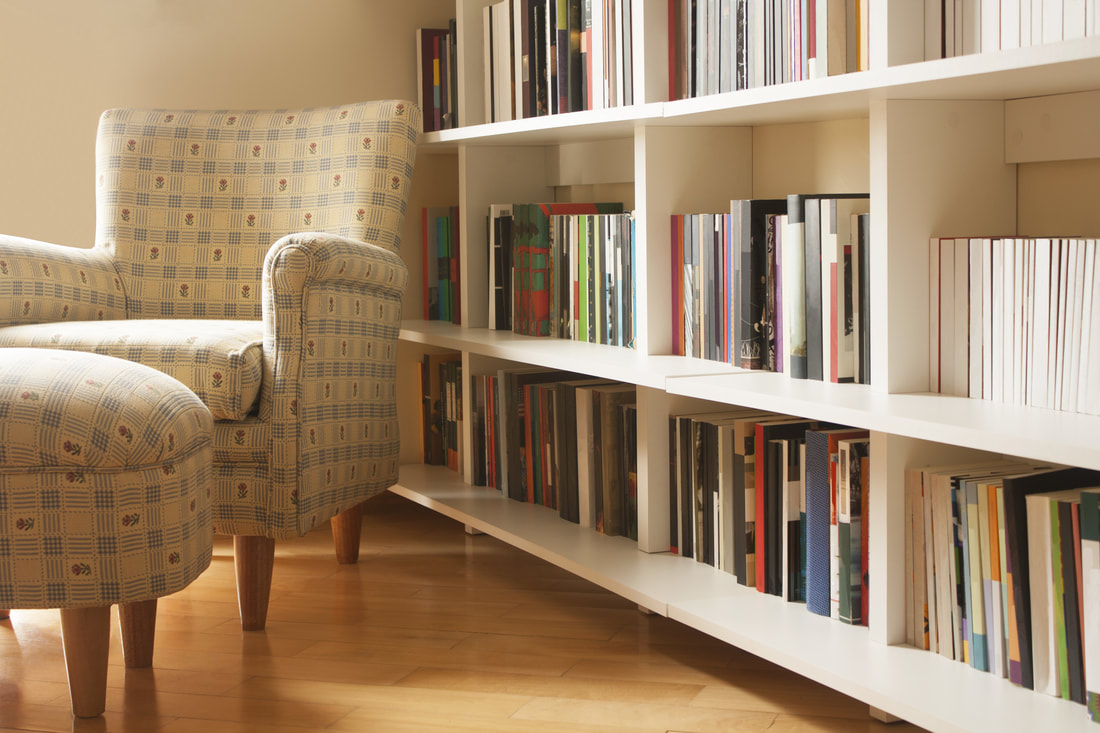
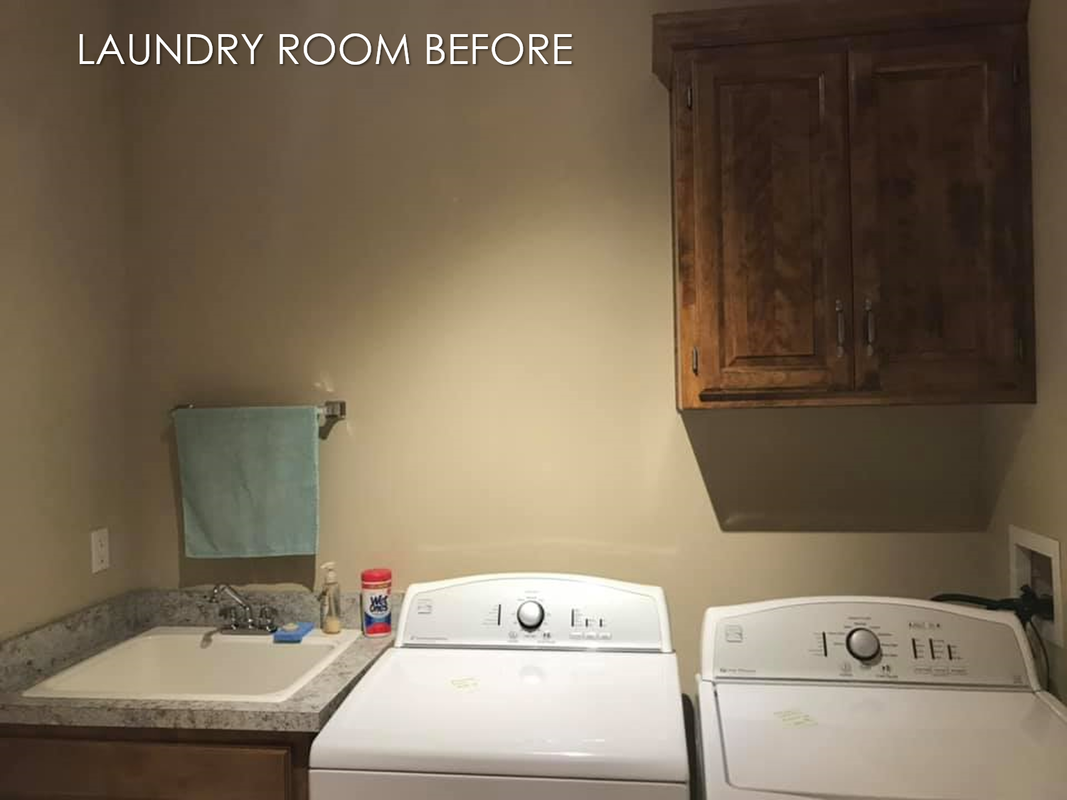
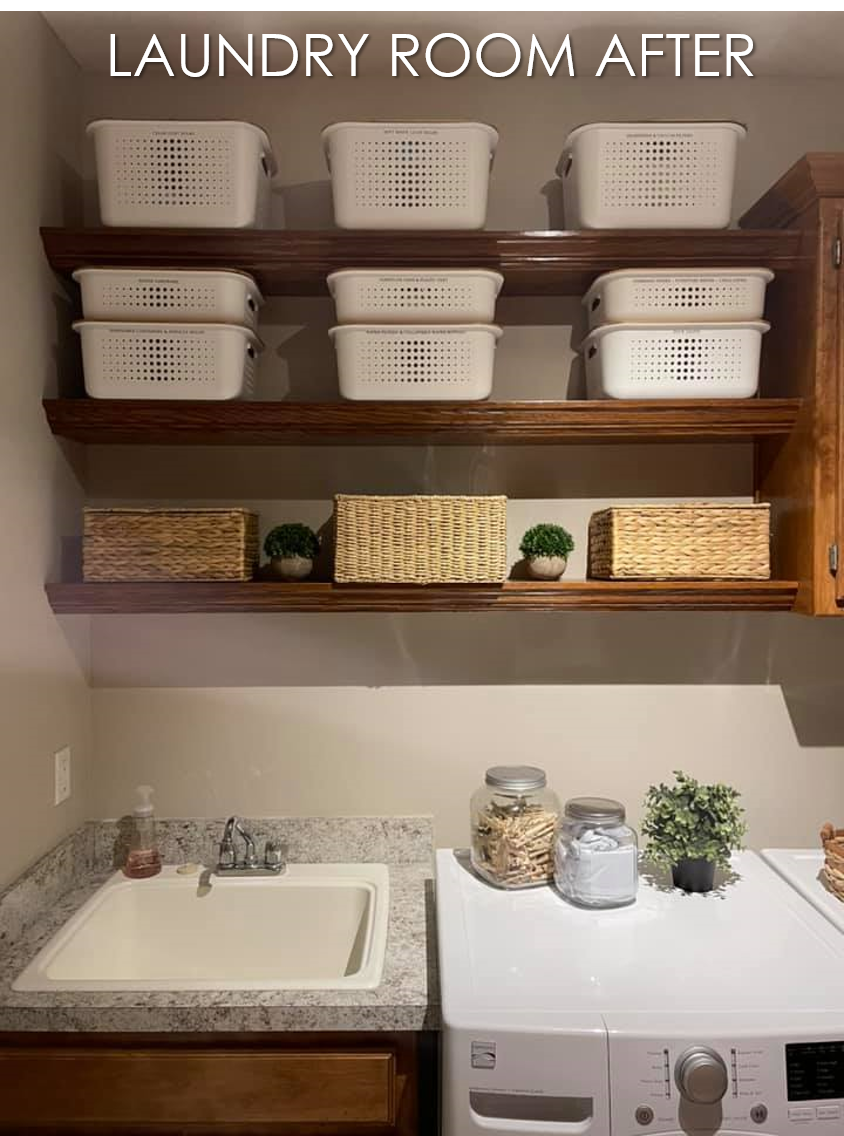
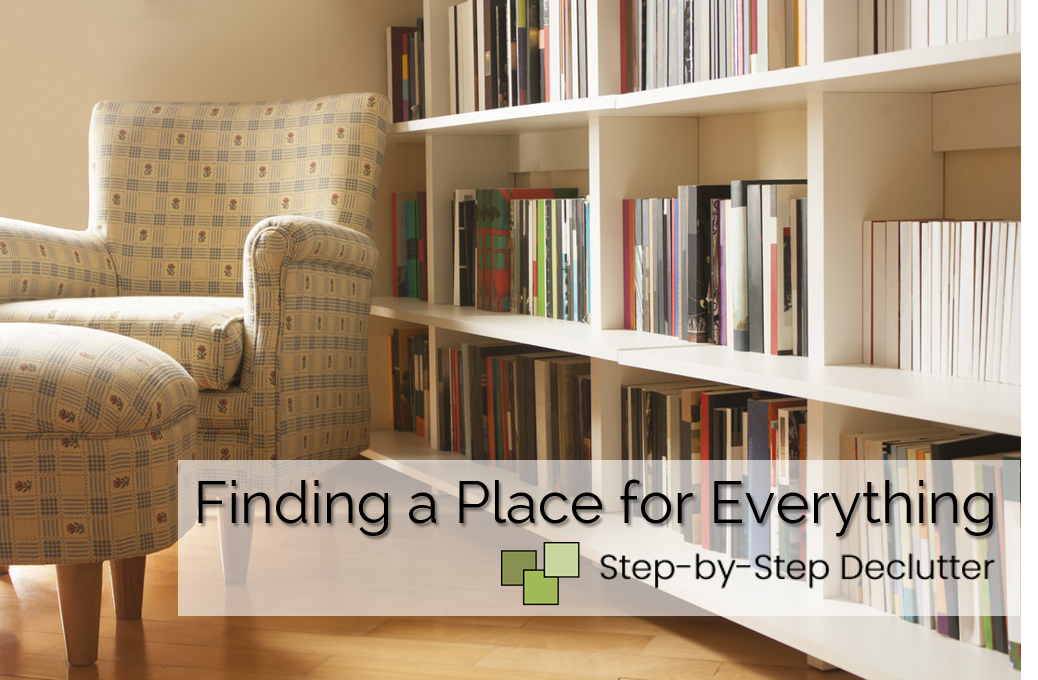

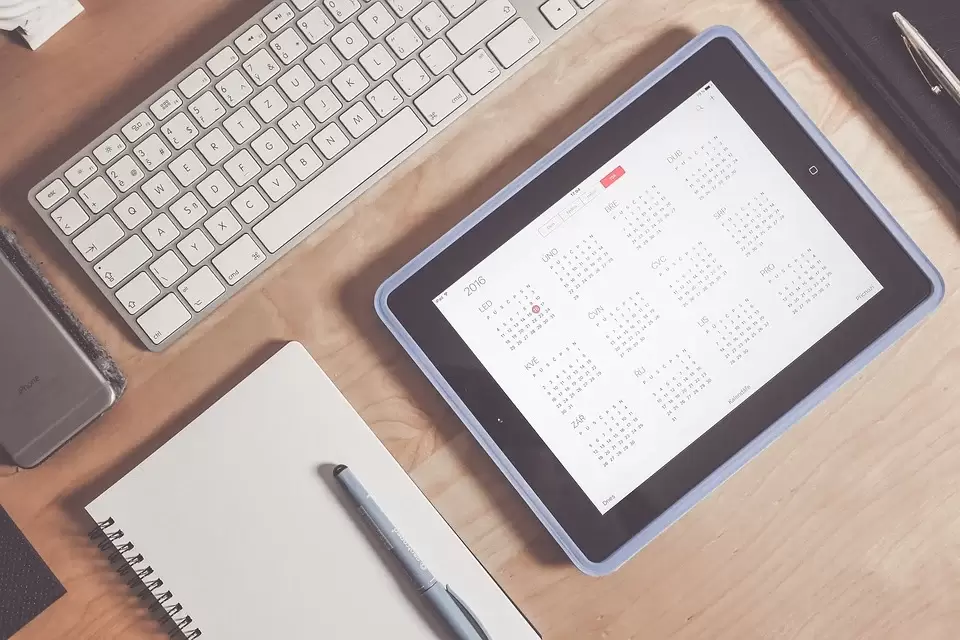


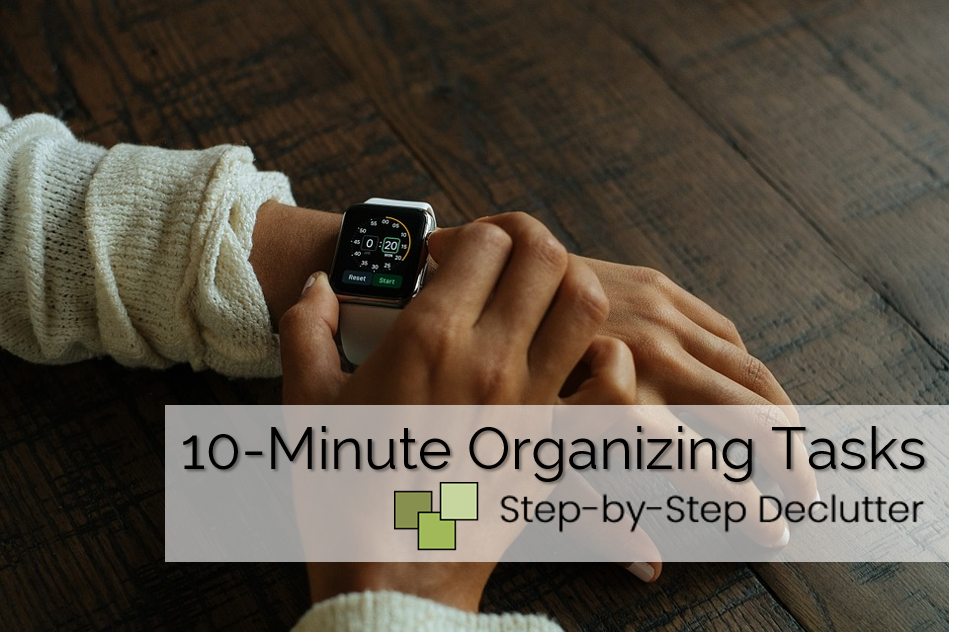


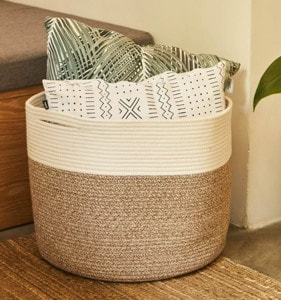



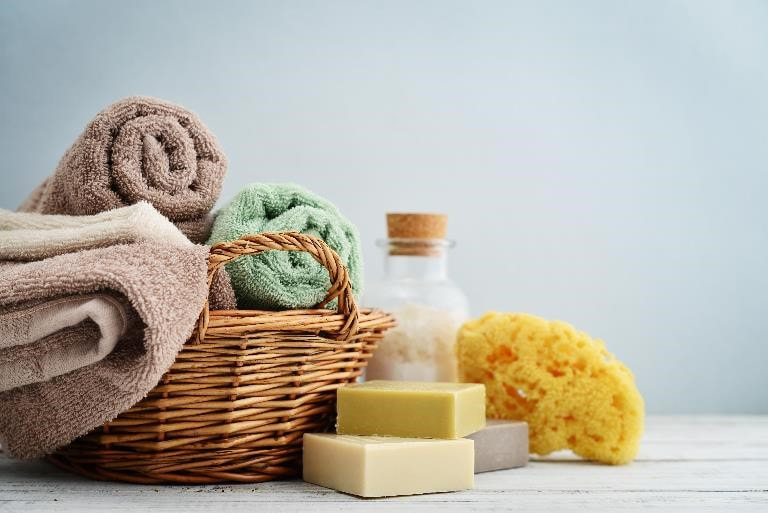


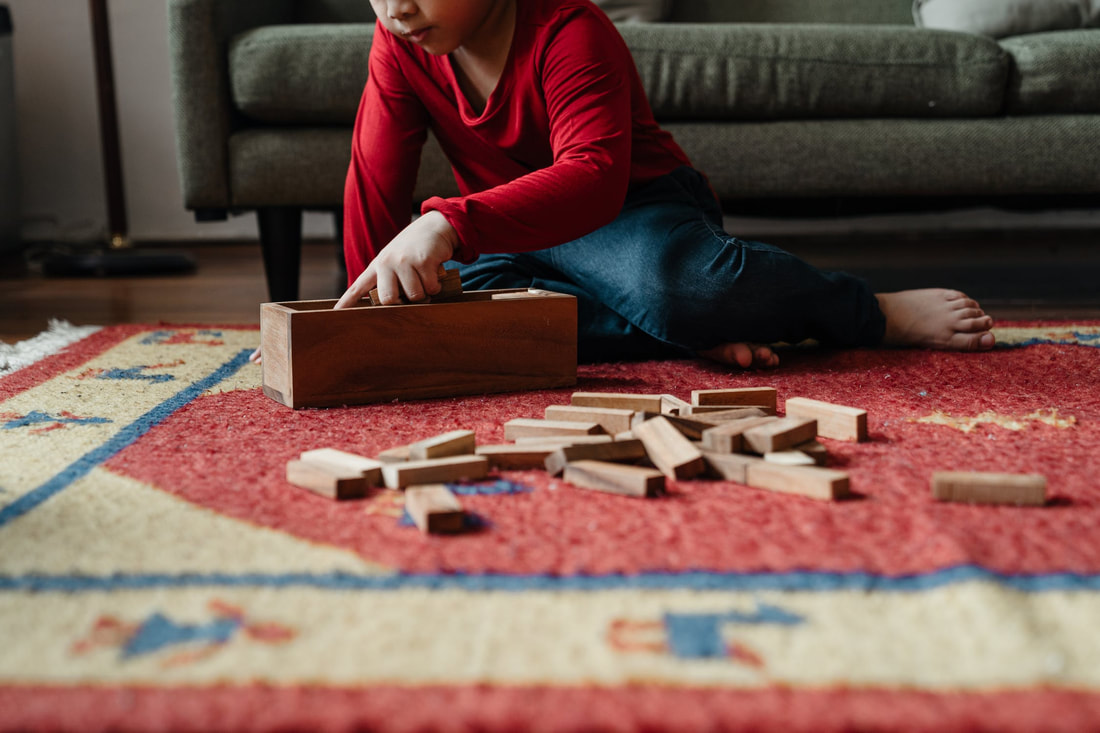


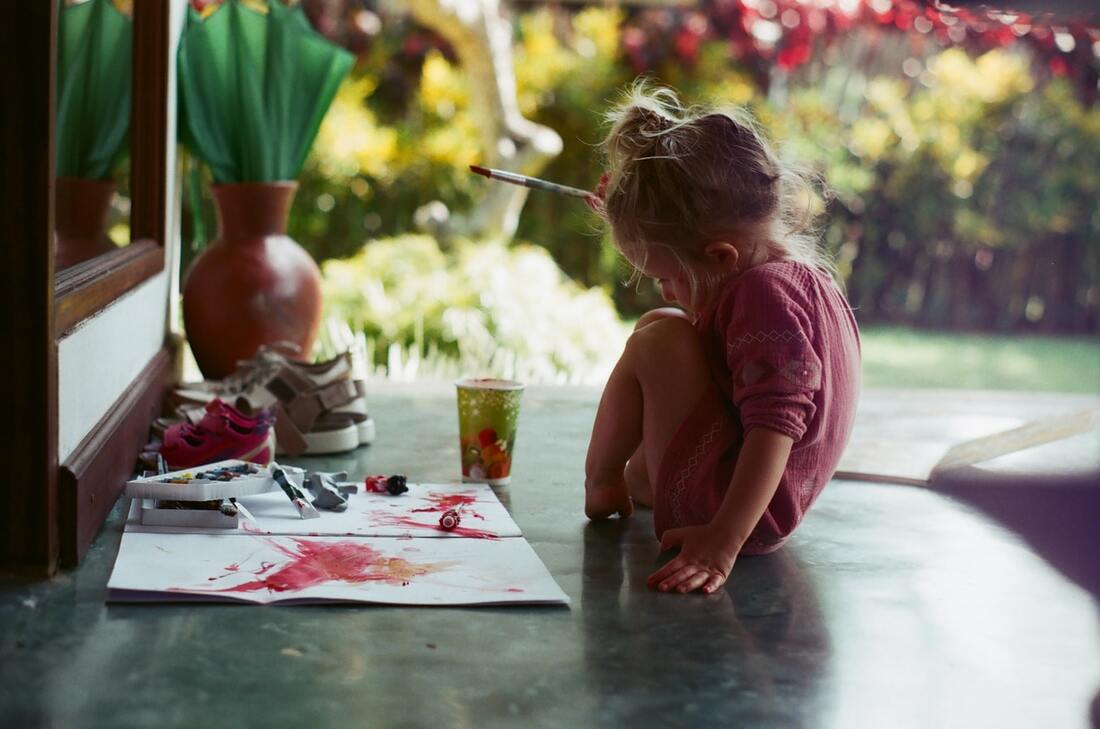
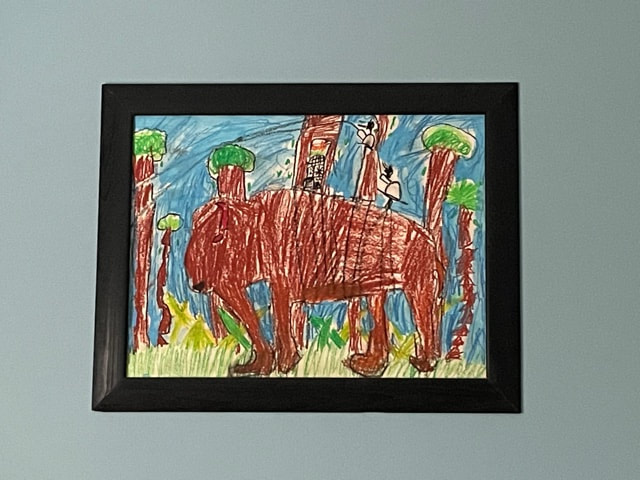
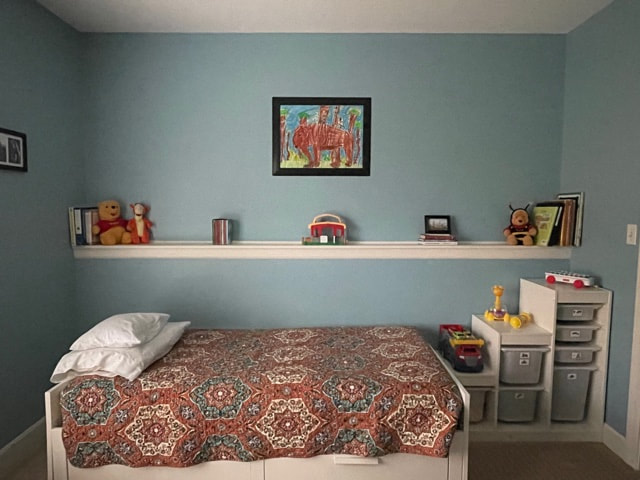
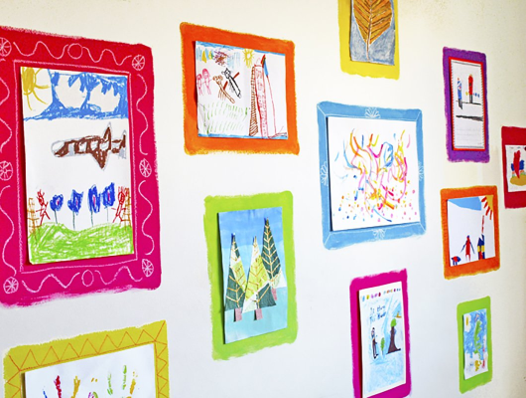
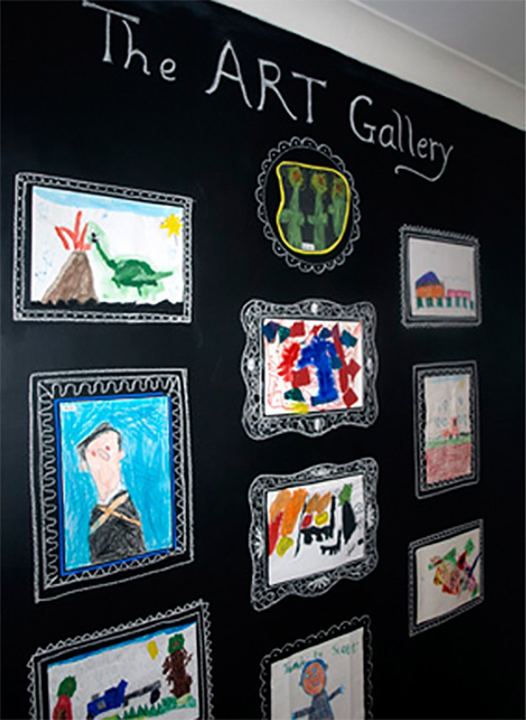
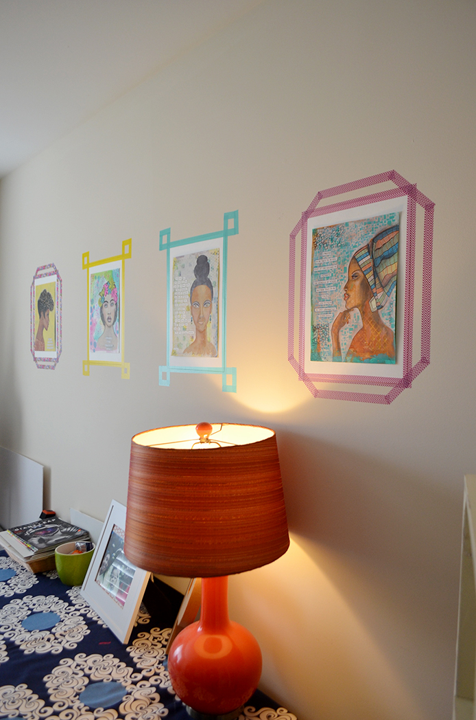
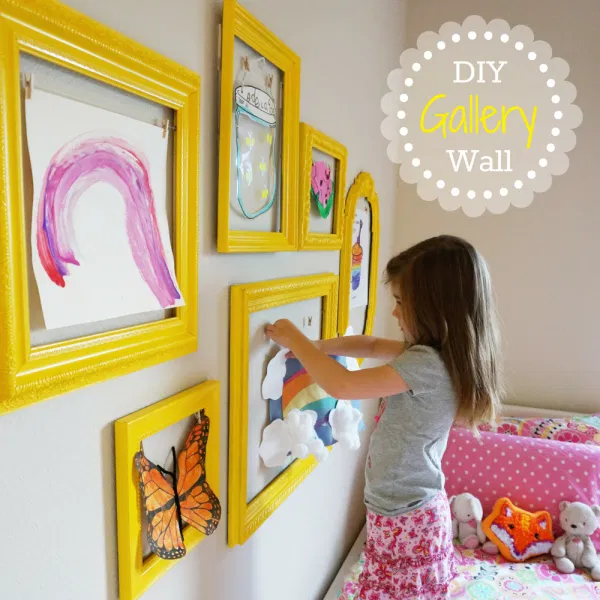
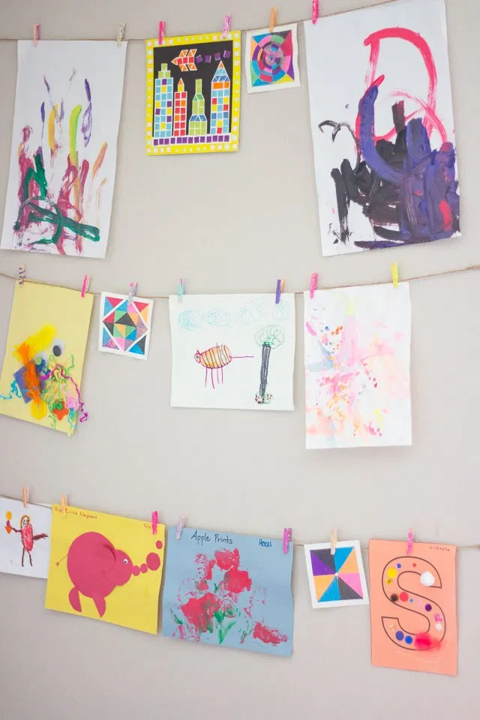
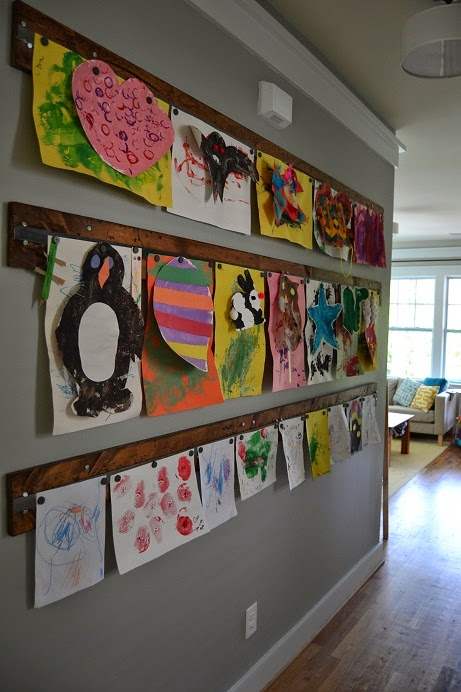
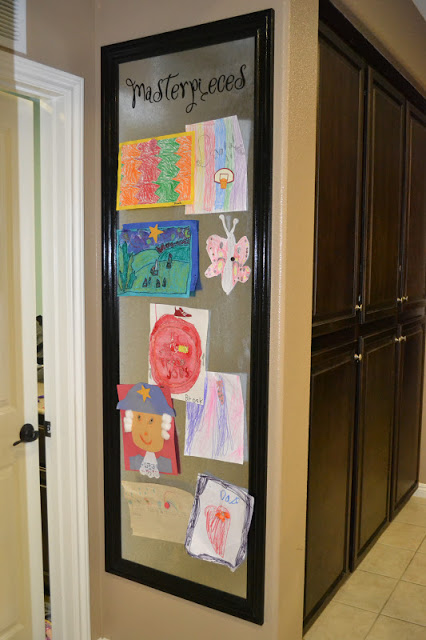
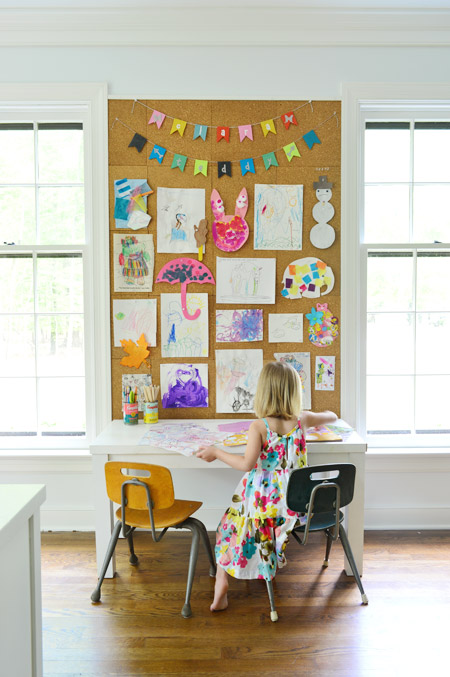
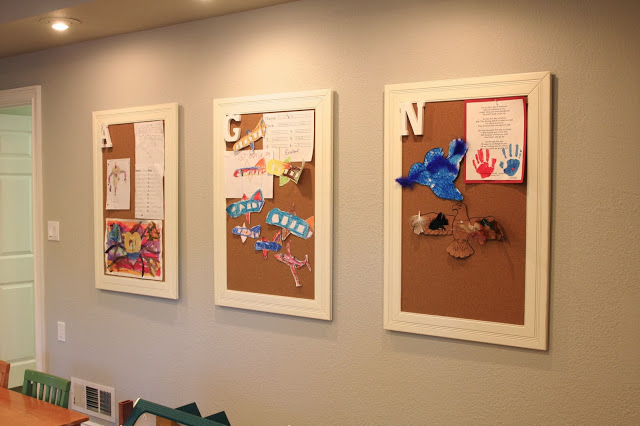

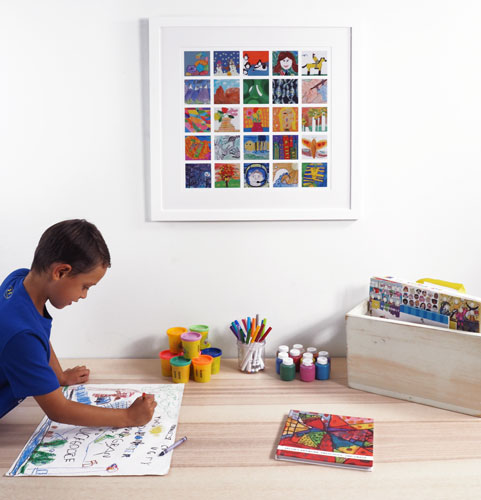
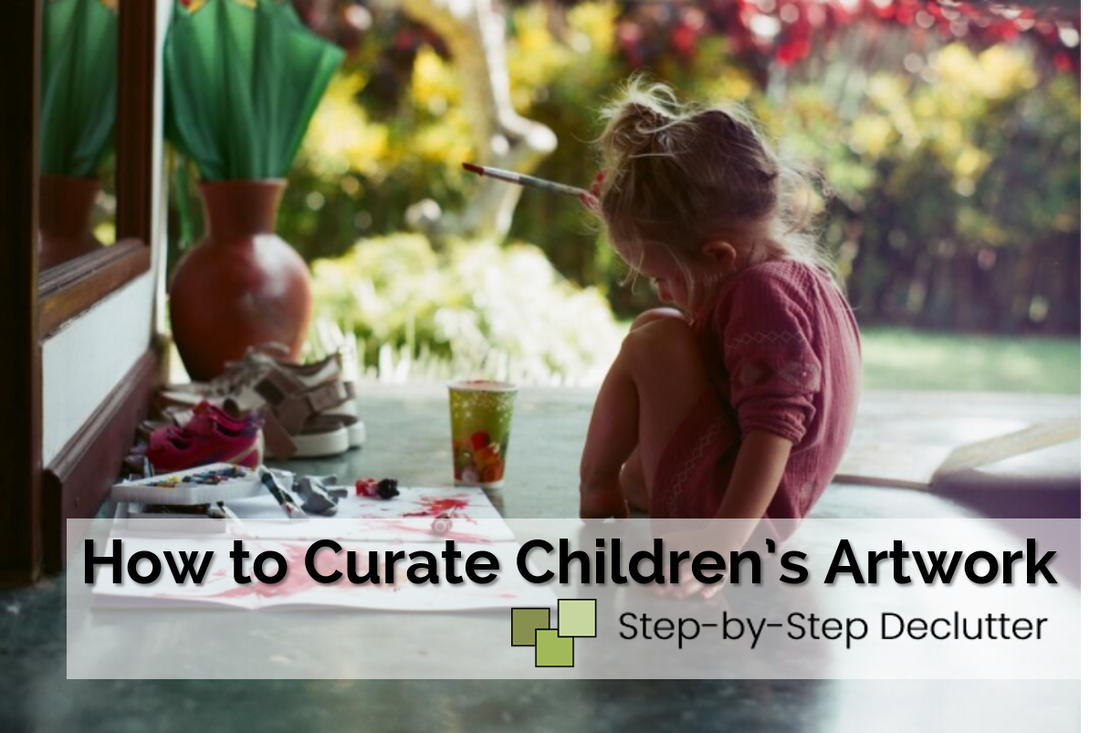
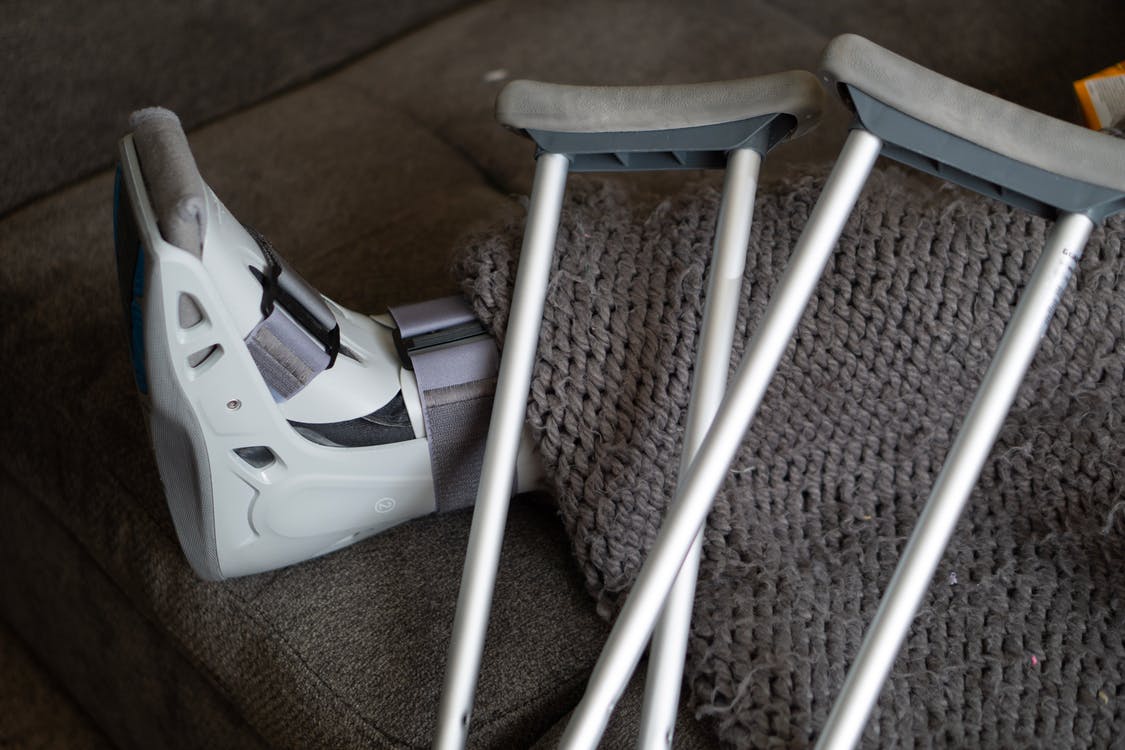
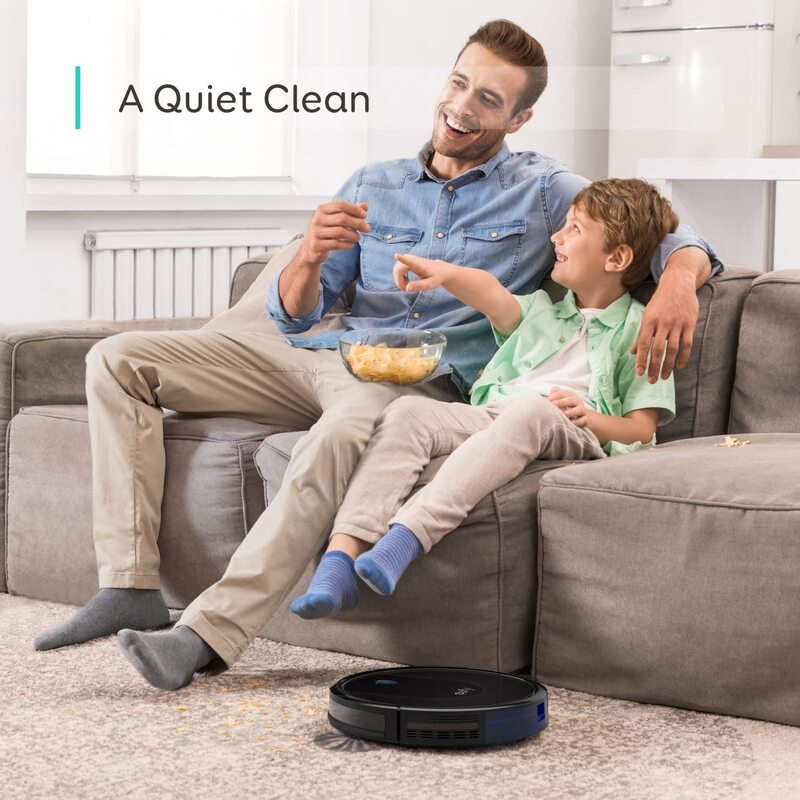
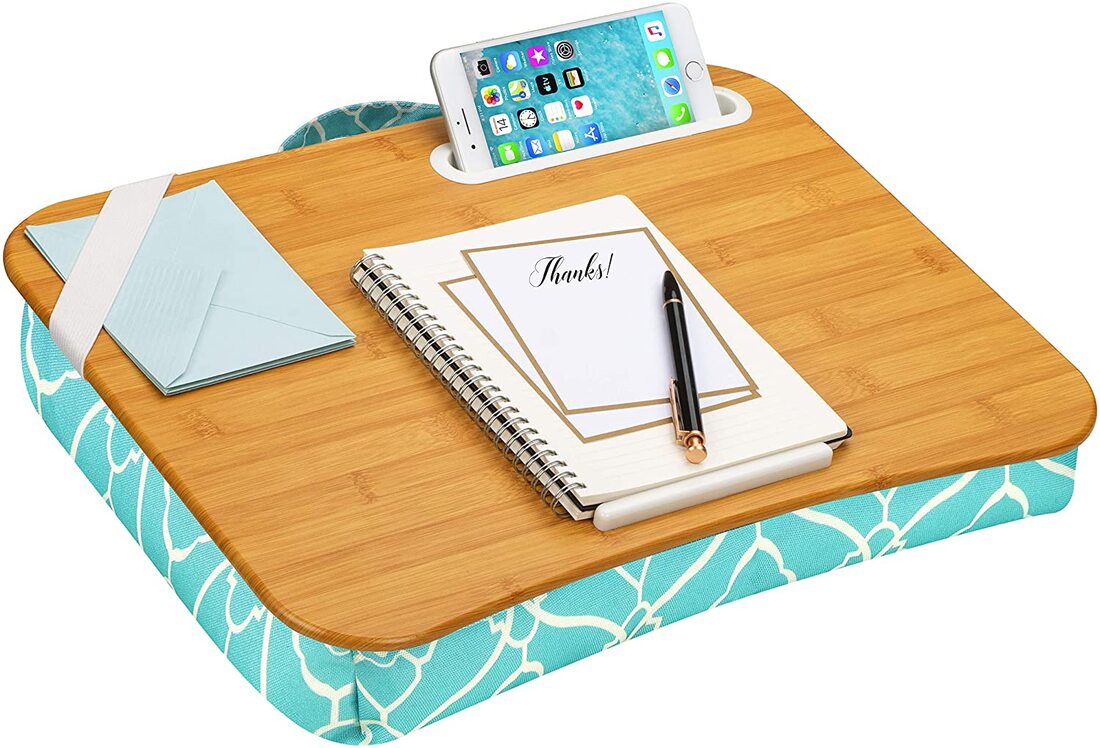
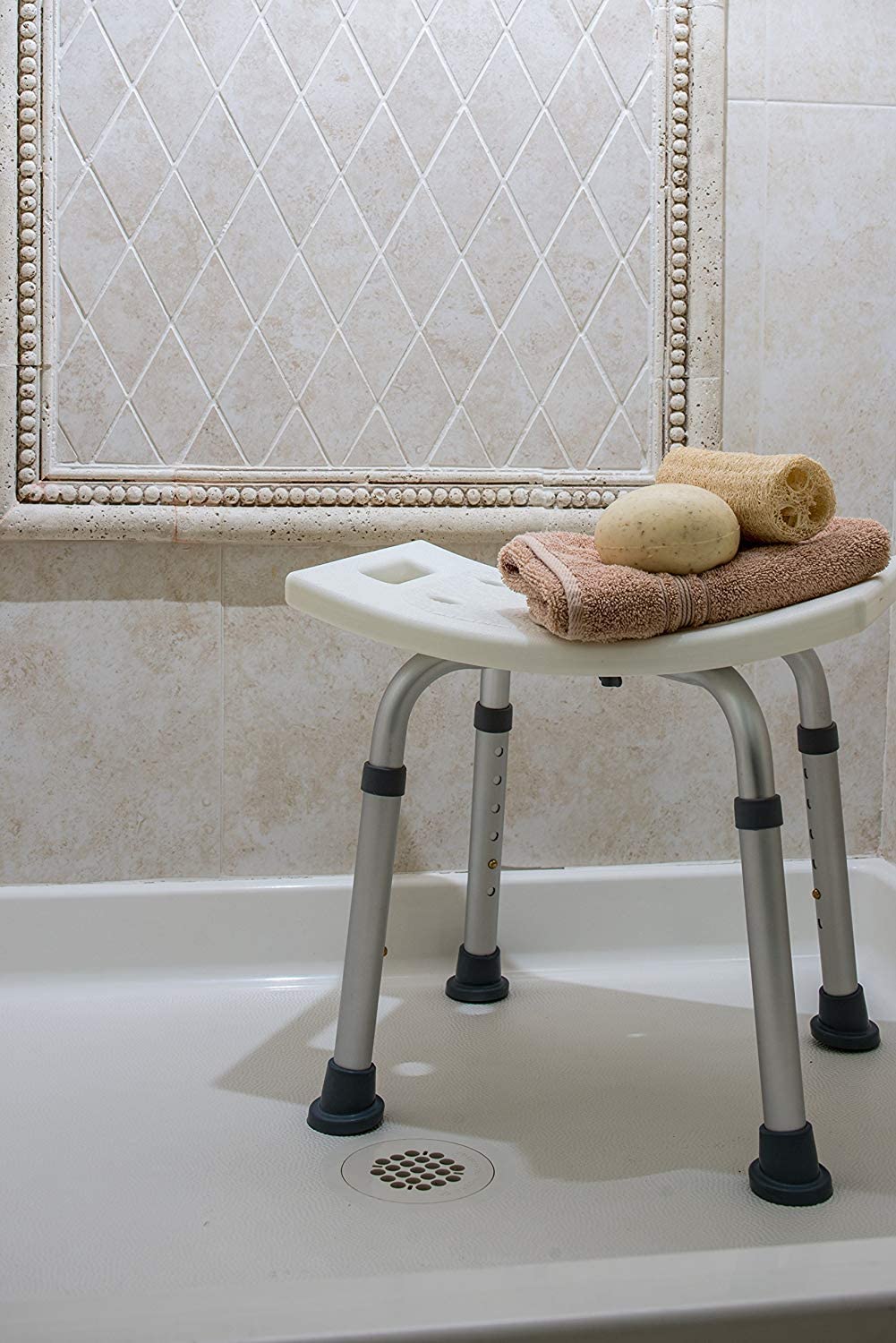

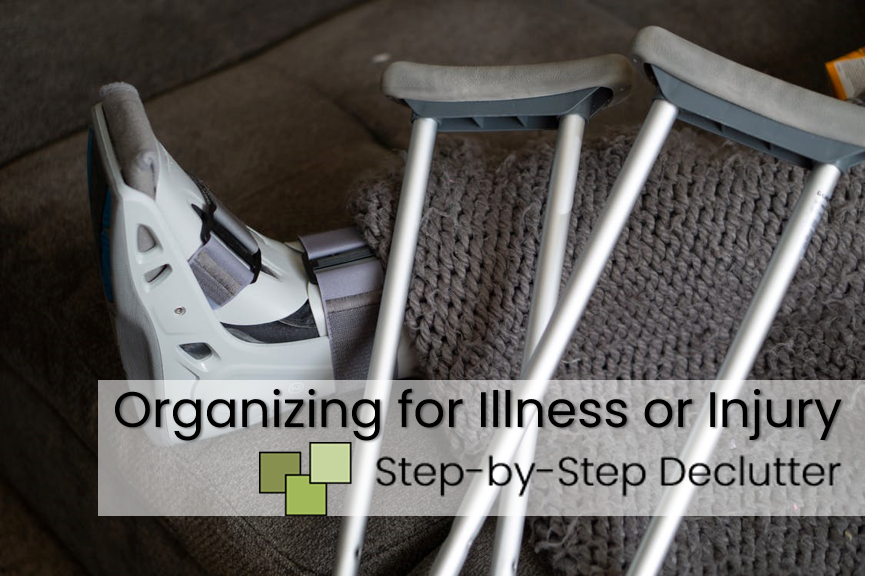
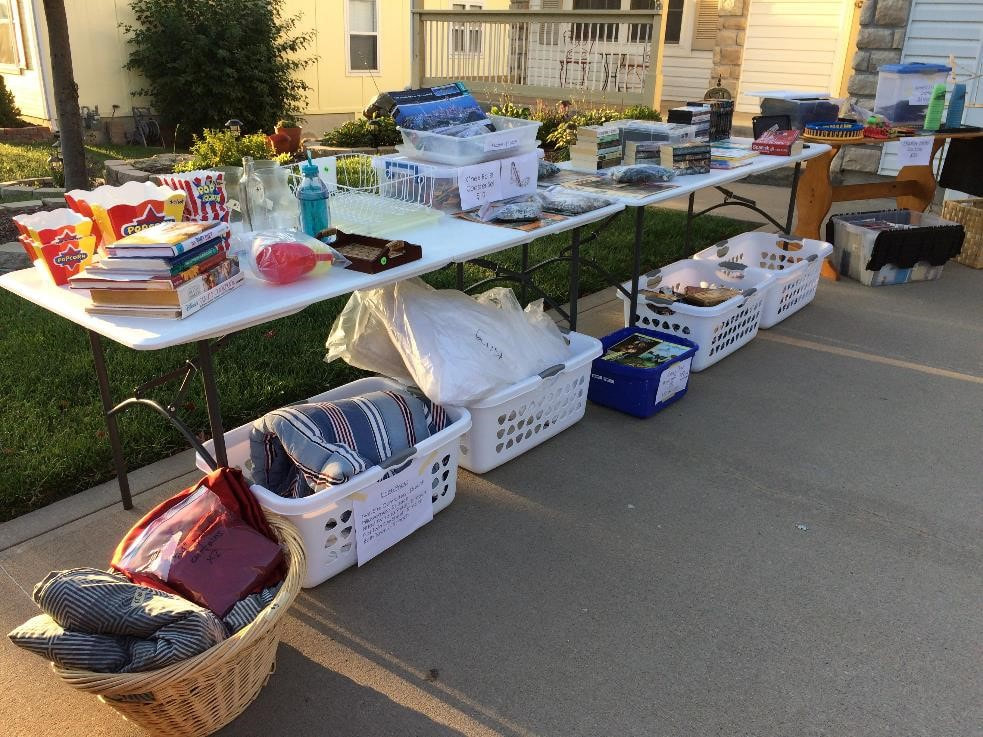
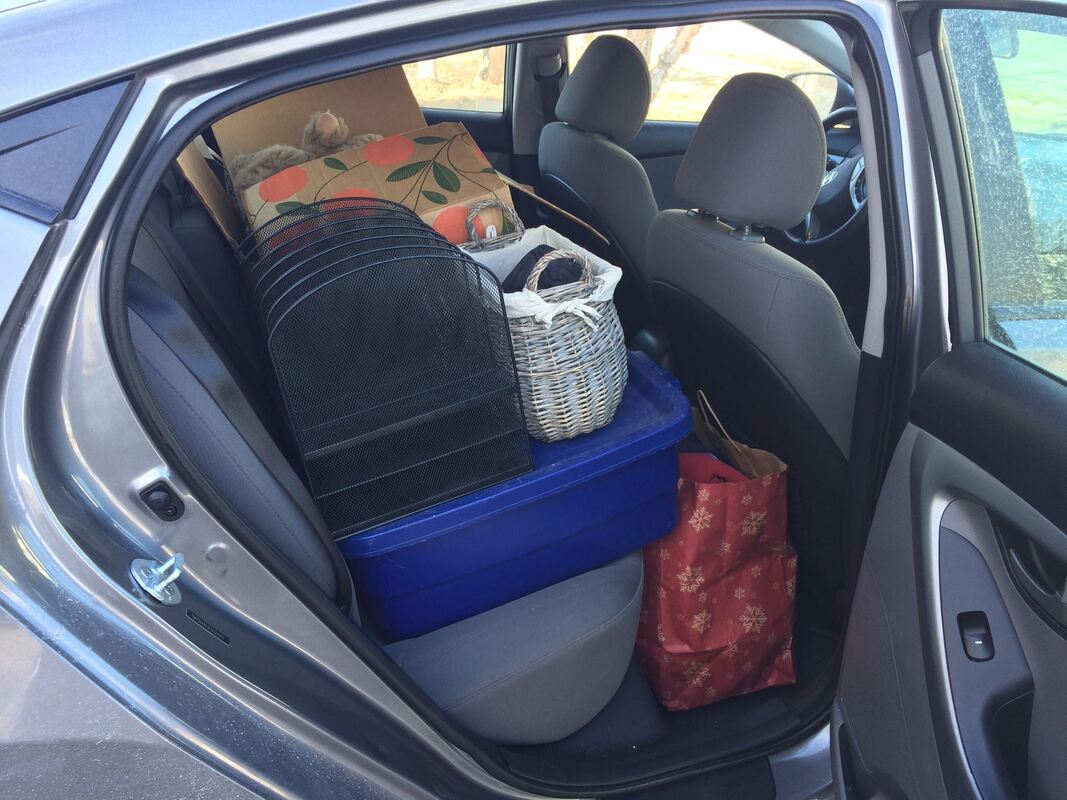

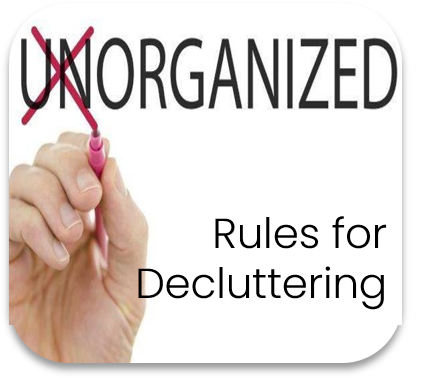

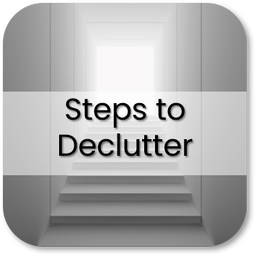
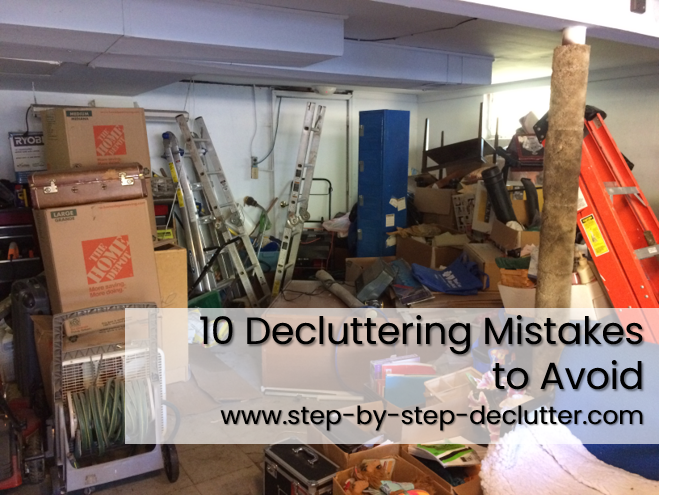
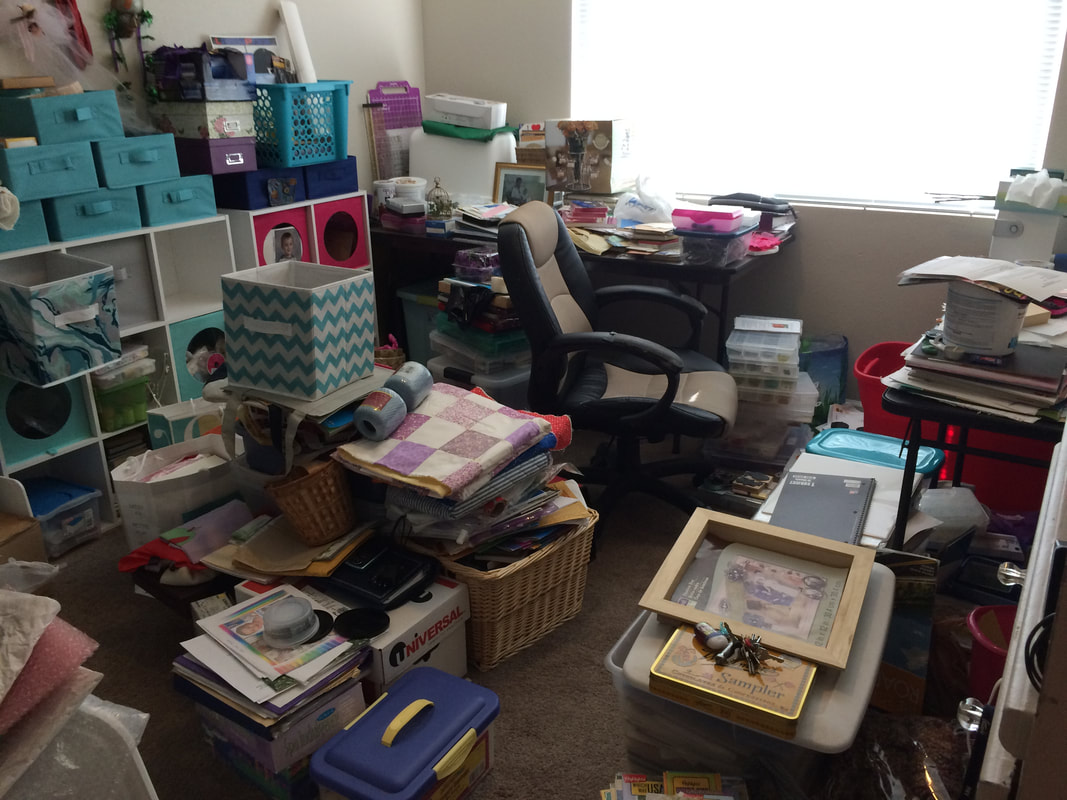

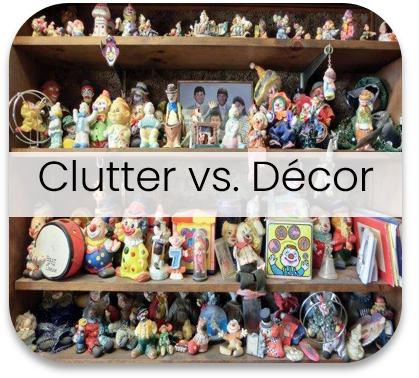


 RSS Feed
RSS Feed